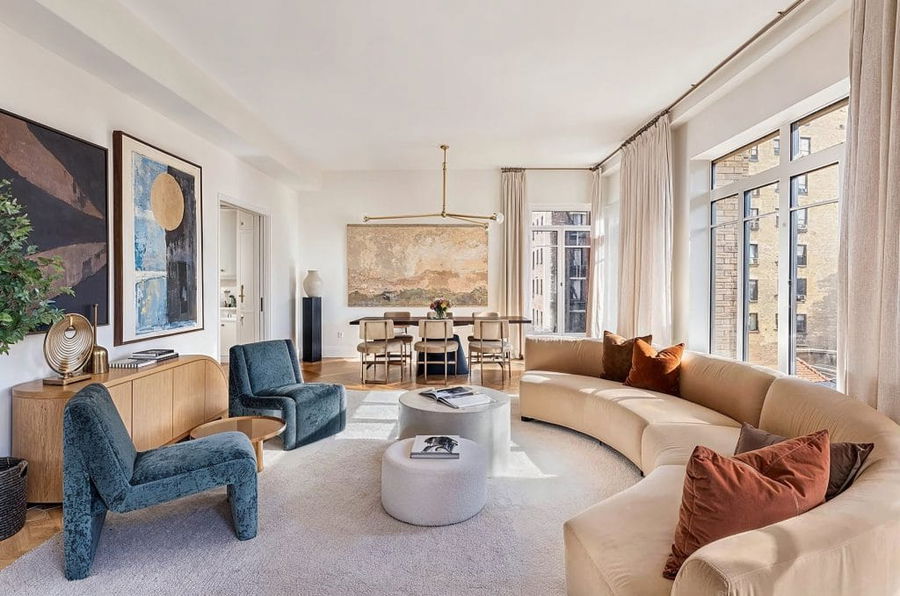
Wondering which interior design style best suits your personality? From sleek modern spaces to cozy cottage vibes, interior design styles can completely transform a room. In this guide, we’ll explore the top 20 interior design styles, helping you find the perfect look for your home.
Interior Design Styles
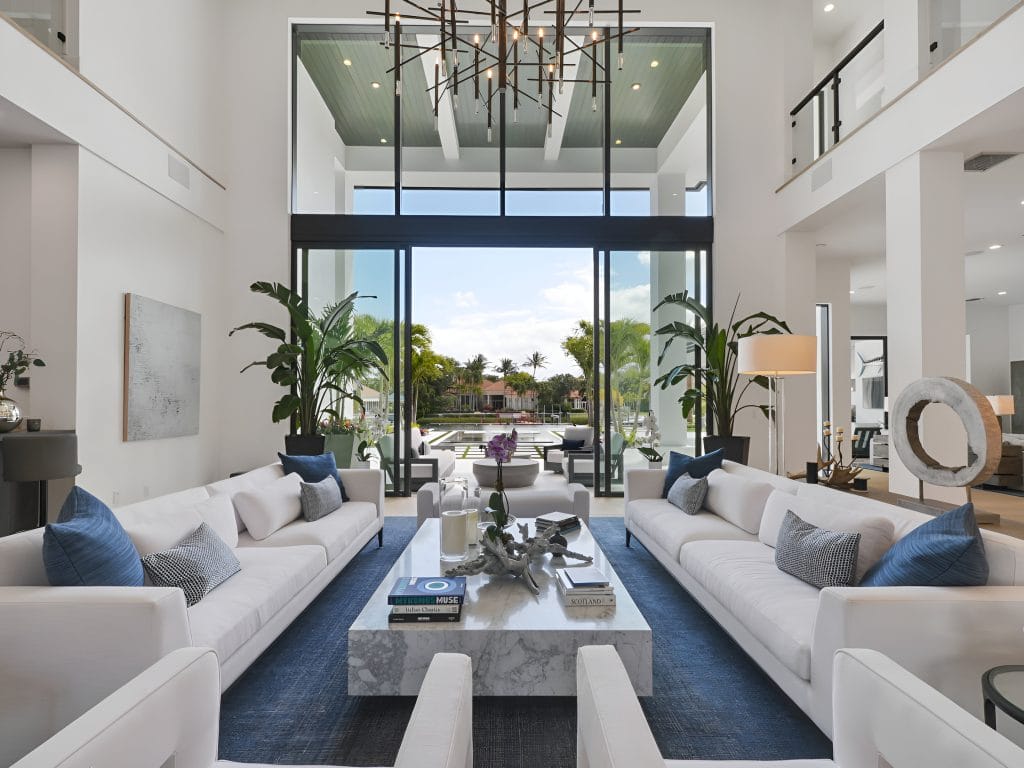
The list of interior design styles is ever-evolving, fluctuating between trendy fads and classics that have stood the test of time. Some of them feature distinctive furniture, décor, lighting, and accessories that mark that signature look. Others blur the lines between specific aesthetics that often mix the old with the new.
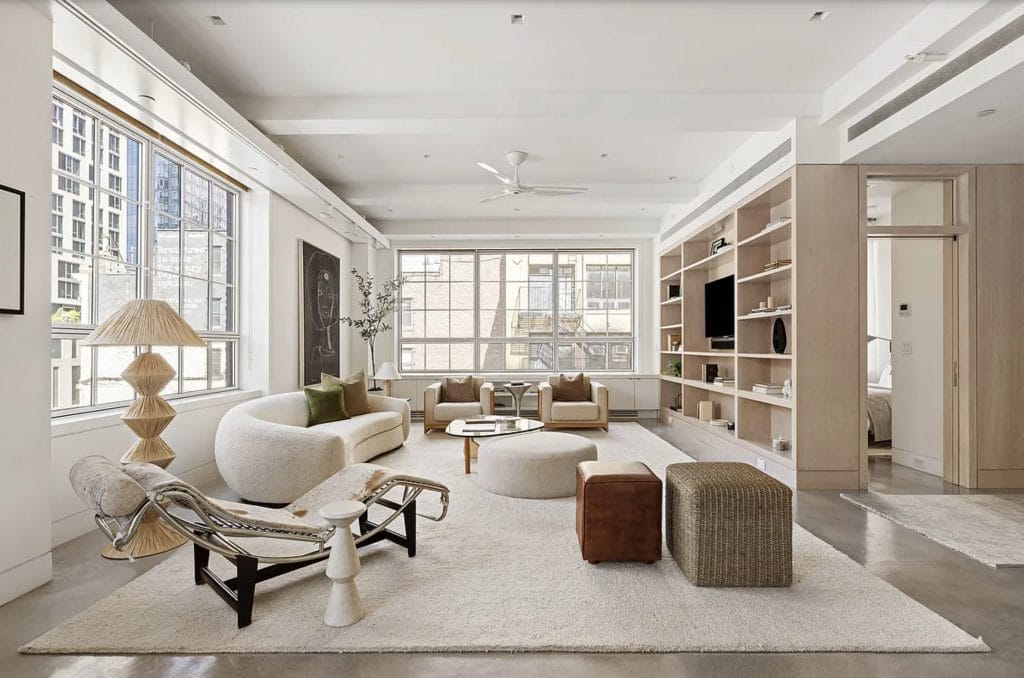
Finding your personal interior designer who “knows it all” is now easier than ever with all the online interior design services. But even these experts need to know what attracts you. So, to begin with—have you noticed connections between inspiration images and design elements that typically catch your eye? Identifying those is the first step toward narrowing down your favorite interior design styles!
20 Most Popular Interior Design Styles
Transitional Interior Design Style

Let’s start with one of the most popular styles in the design world today. Transitional design is what we like to call the happy medium of interior design styles. This is a perfect solution for anyone who finds traditional design too stuffy, while the contemporary approach falls too far out of their comfort zone. Or those who want to modernise their home but keep and integrate some precious family heirlooms at the same time.
Interior design styles can combine different aesthetics. Try our Free Interior Design Style Quiz to pinpoint your personal style even if it has no name!

Transitional interior design style blends traditional elegance with contemporary lines, calmer patterns, and cleaner layouts. In addition, transitional interiors keep accessories to a minimum, allowing furniture and textiles to do the talking.
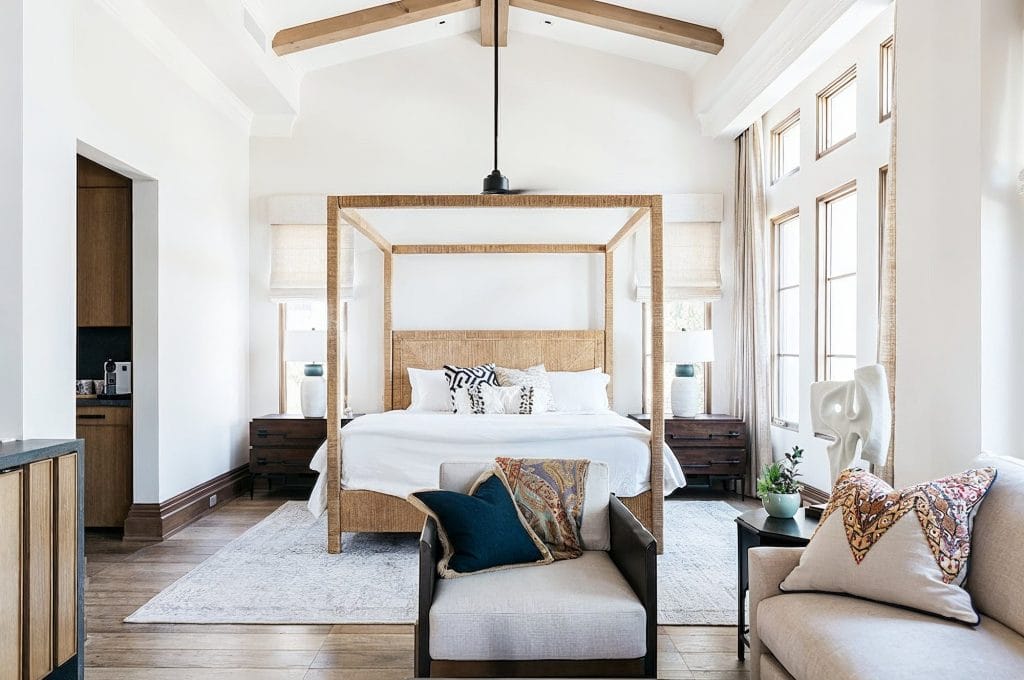
Perhaps the most aesthetically pleasing aspect of the transitional design style is its flexibility. You can mix masculine and feminine vibes, modern curved furniture with ornate elements, even finishes like rattan and lacquer. It’s the combination of seemingly unmatchable elements that creates an interesting, welcoming home design.
Pro Tip: If you choose Transitional Interior Design as your direction, curate area rugs, throw pillows, and blankets as accessories.
Traditional Interior Design Style
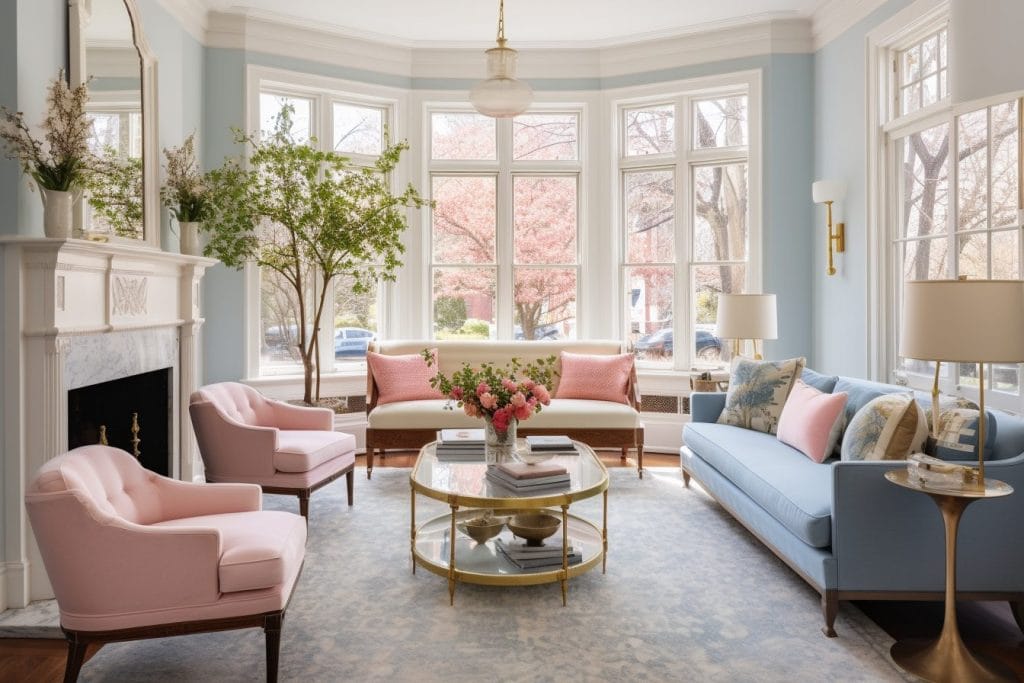
One could easily recognize traditional interior design by its adherence to historical references, symmetry, rich color palettes, and classic shapes. It draws inspiration mainly from 18th and 19th-century European interior design styles known for a harmonious, elegant atmosphere. Architectural elements such as crown molding and wainscoting are an integral part of the aesthetics, well-matched with antique furniture pieces.
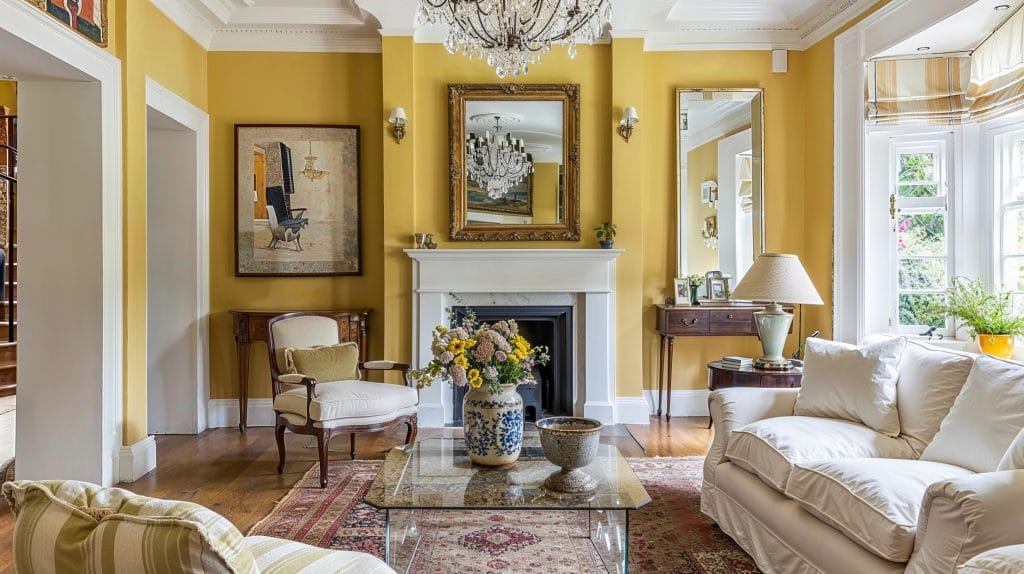
Another staple of a traditional interior is abundant textiles in different patterns. In contrast to modern or minimalist designs, traditional interiors thrive on ornamentation. Silk, velvet, and damask are commonly used, embellished either with florals, stripes, or plaids. These are combined with dark laquered woods, which also boast intricate carvings.
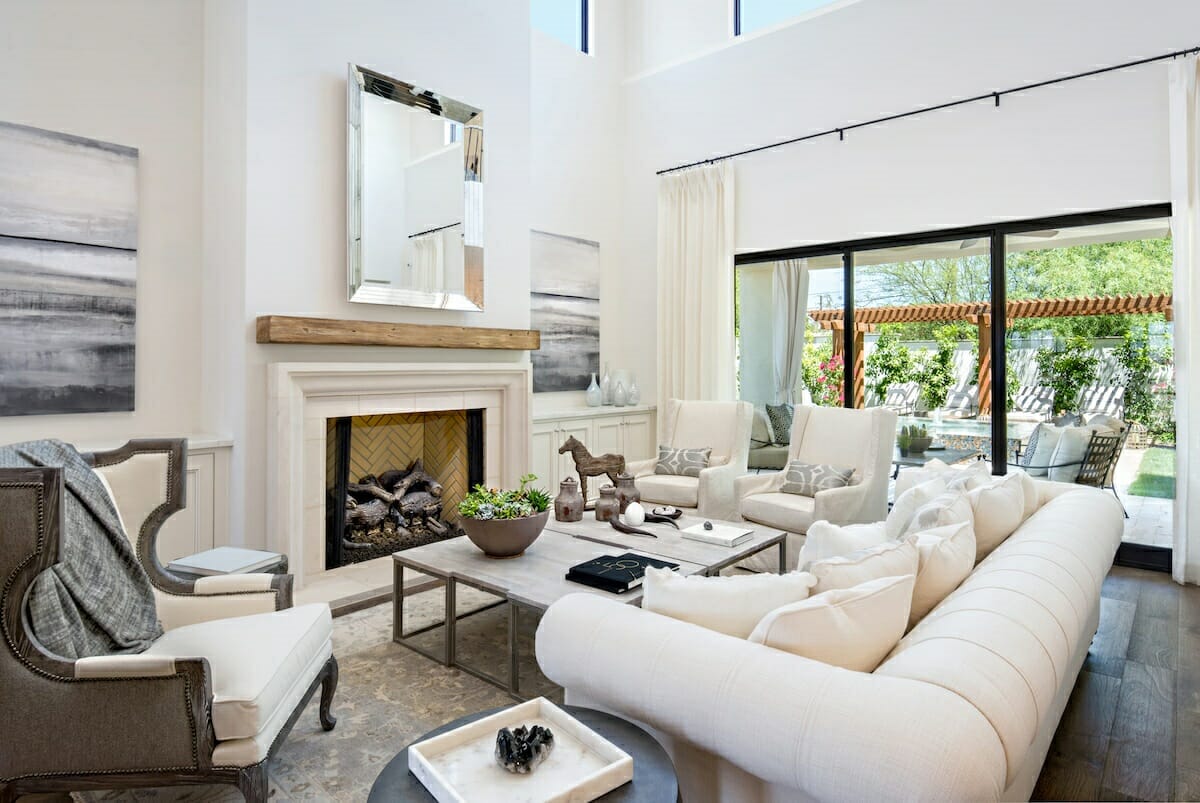
Traditional style rooms are arranged in symmetrical layouts to highlight balance and proportion. Layered lighting schemes include chandeliers, sconces, and table lamps. Finally, accessories like framed artwork, decorative pillows, and classic rugs contribute to the stately feel of the space.
Pro tip: When selecting pieces for Traditional Interior Design, prioritize quality and craftsmanship.
Modern Interior Design Style
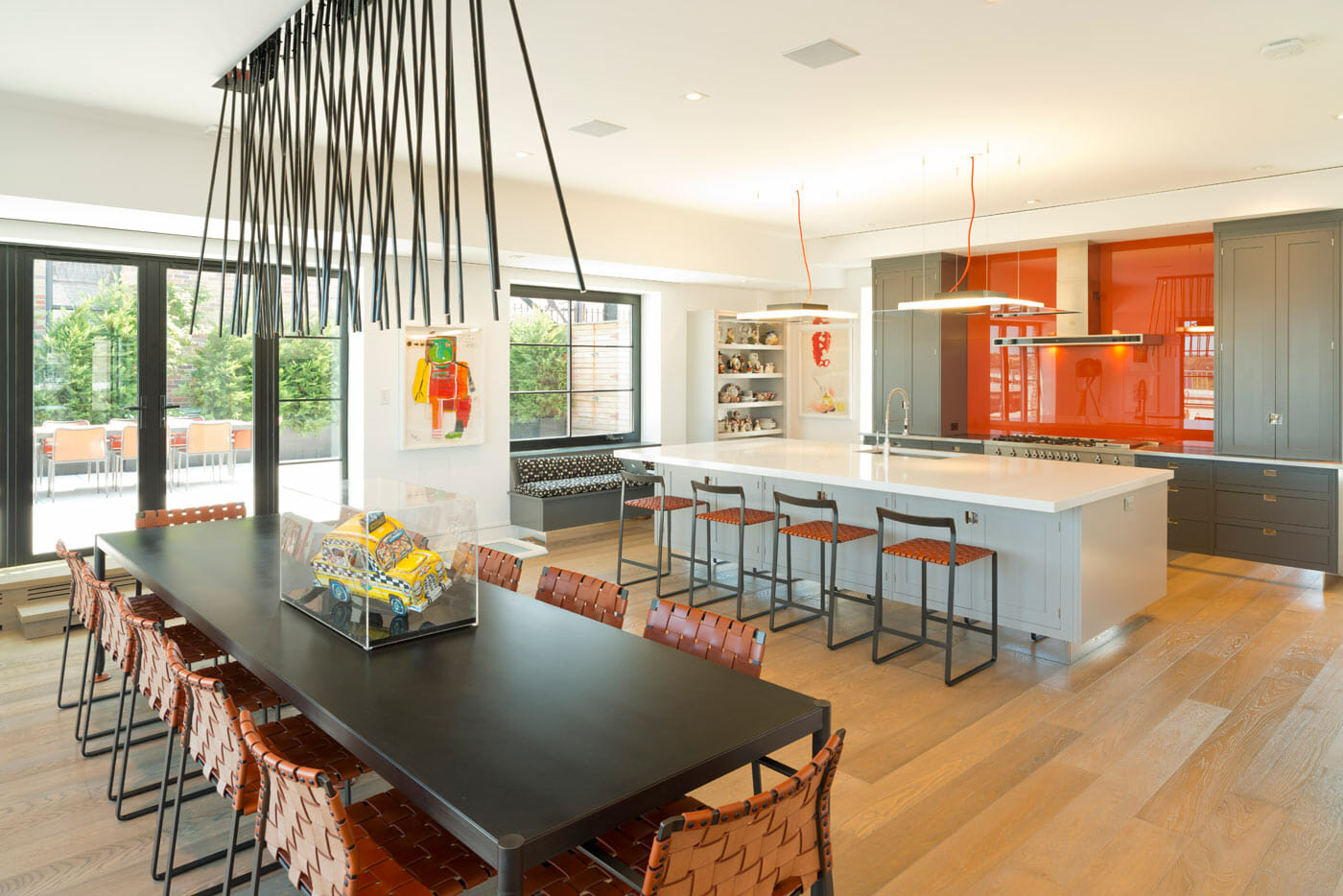
And now we get to the top interior design styles conundrum, so let’s clear that up once and for all. In spite of their common interchangeable use and many similarities, “modern” and “contemporary” are different design styles. Modern design refers to a specific time period while contemporary design is ever-evolving. Modern interior design came on the radar in the early to mid-20th century; contemporary is more like “now.” It could be modern, but it doesn’t have to be.
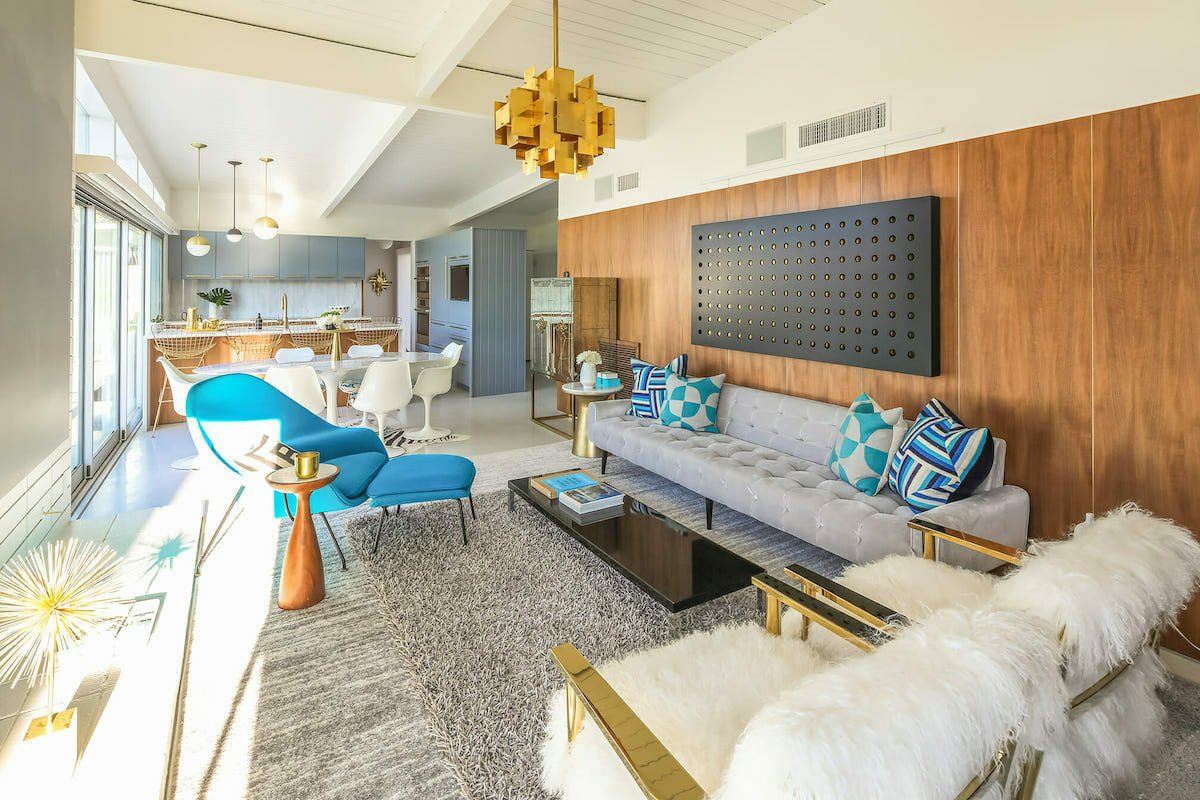
Our current definition of modern refers to the mix of Scandinavian, mid-century modern, and post-modern interior design styles. For example, furniture mainly has clean lines with smooth, sleek surfaces. Metal, chrome, and glass are favorite choices among modern designers.
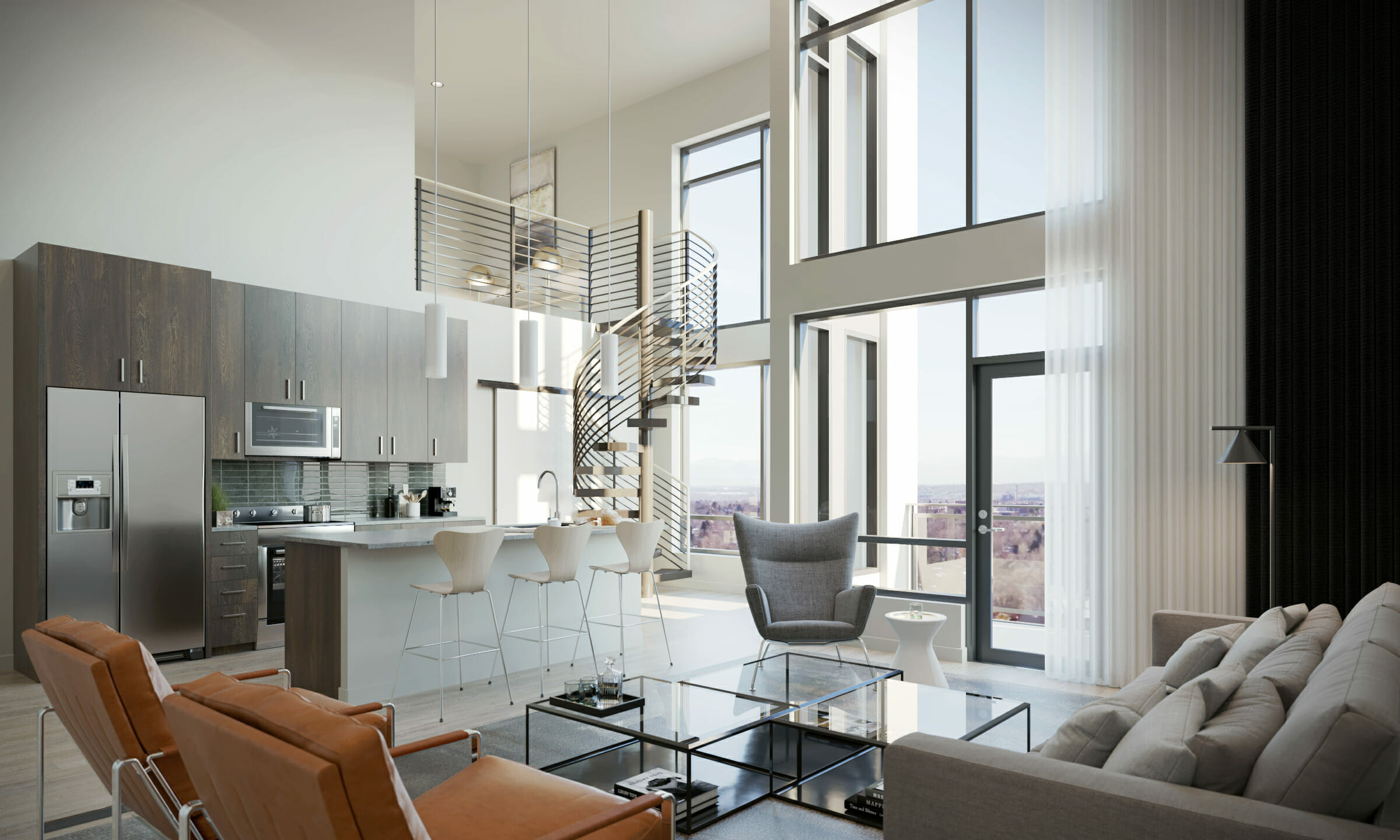
In addition, with modern interiors, décor is kept minimal. This style ditched the knick-knacks in favour of art and an occasional statement accessory as the main decorative elements. That’s why you’ll commonly find bold, colorful accents in a mostly neutral space today. While modern interiors tend to veer toward minimalism, a common mistake is confusing it with blankness. The trick is to mute the materials, not the mood.
Pro Tip: In Modern Interior Design, choose one material—walnut, brushed steel, travertine—and let it repeat in unexpected ways.
Eclectic Interior Design Style

Misunderstandings are also common when it comes to the eclectic interior design style. You’ll know you’re in an eclectic space when your eye keeps catching on things that shouldn’t work together, but somehow do. A baroque mirror over a concrete console; indigo batik pillows thrown across a leather Togo sofa; Turkish kilims under Danish chairs. But here’s the specificity: every object must be curated. The style fails when it turns into an accumulation.

Despite its reputation as a kind of aesthetic free-for-all, an eclectic interior is anything but haphazard. Where modernist design smooths everything into coherence, eclectic rooms leave the seams exposed and stack aesthetics with a point. Think this way: the reason a Victorian armchair doesn’t clash with a Bauhaus light fixture is that this style thrives on contradictions deliberately left unresolved.

If you wish to try setting up an eclectic interior, start with a neutral color palette and use a select few accents to bring in the worldly vibe. Florals can go with geometrics, but you’ll need a color code to connect them. Also, nothing must necessarily match, but everything should relate.
Pro Tip: Use large pieces to ground your Eclectic Interior Design and small ones to throw it off balance.
Contemporary Interior Design Style
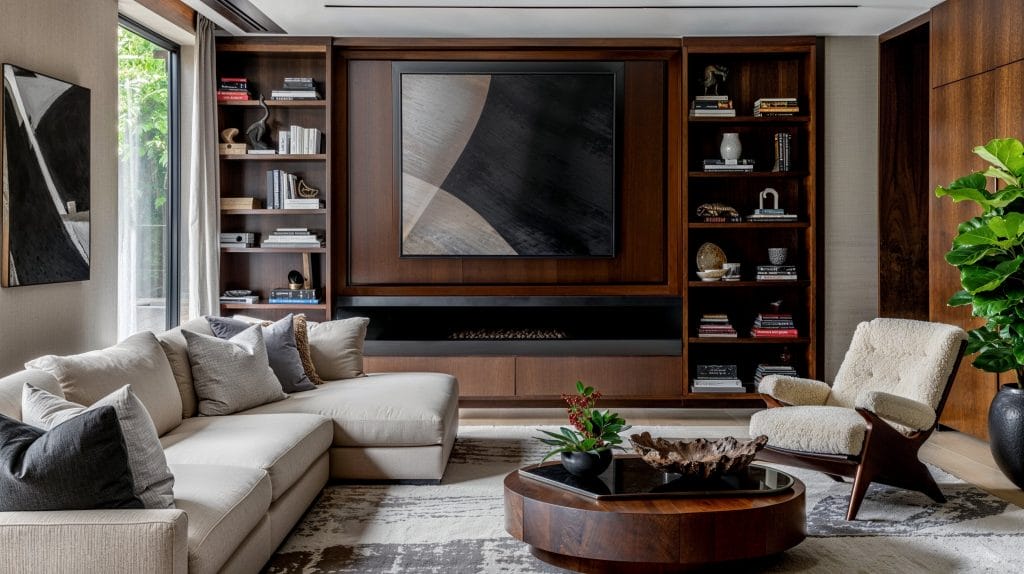
When you look at interior design styles throughout history, contemporary interior design is the one that is always evolving. In the same way, contemporary design style will also continue to change over the course of the twenty-first century. That’s because “contemporary” refers to “here and now,” in other words, anything of the present moment. This design fashion borrows from various time periods but always adapts them to the current trends and technology.
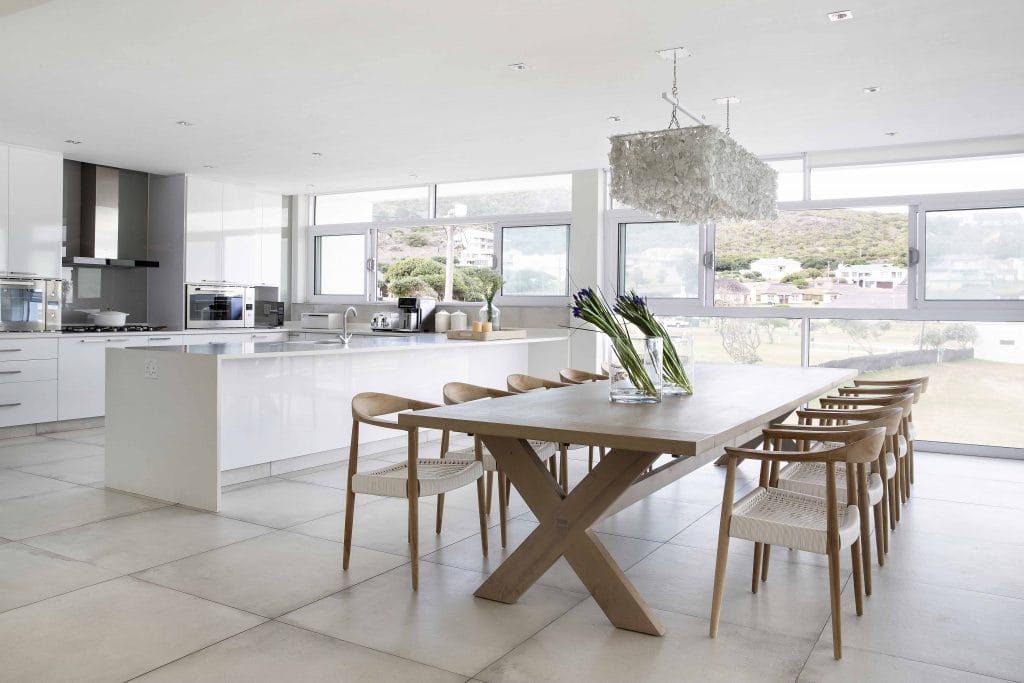
Despite the flexibility, contemporary interior design is mostly sleek and simple. Take as an example those open-concept living room and kitchen makeovers. They use different features like detailed moldings on walls and windows, and combine them with an open layout of streamlined furniture. And speaking of those, typical contemporary furniture design shows exposed legs and clean lines that lend a light and airy feel.
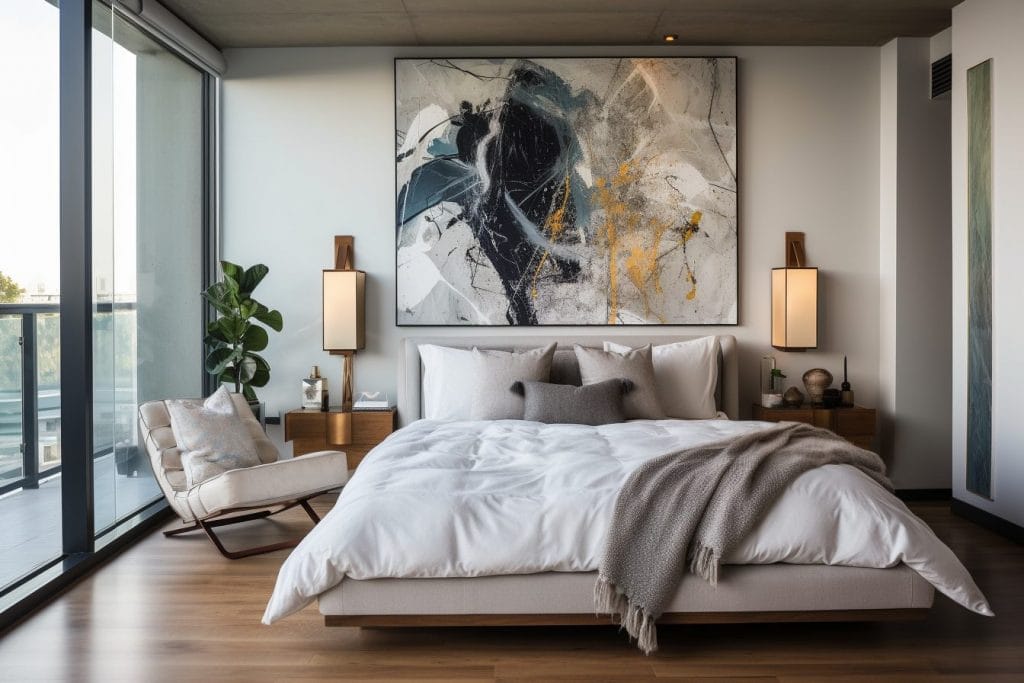
It’s common to see metal and glass here, used for their light-reflecting properties. But organic materials do not fall behind in contemporary interior design styles. In fact, they go hand in hand with trendy neutral color palettes, curvy forms, and textured fabrics. With the rise of quiet luxury as an “it” approach, you could almost say that contemporary organic is a perfect luxury modern interior.
Pro Tip: Curate! Less is more, even in Contemporary Interior Design.
Minimalist Interior Design Style
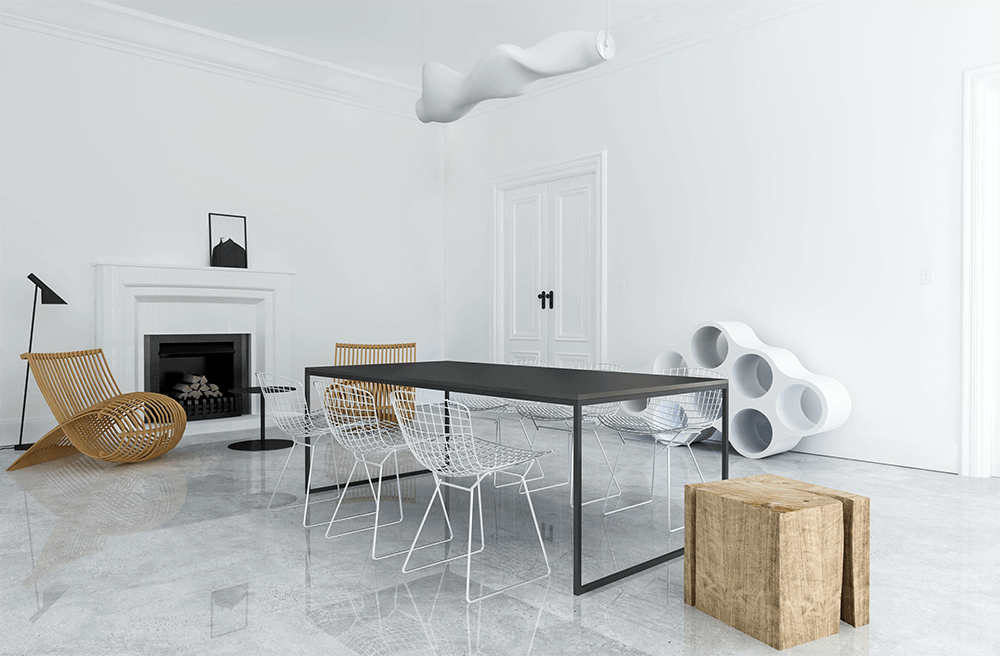
Modern and minimalist designs have a lot of the same qualities. Both love uncomplicated forms, clean lines, and simple finishes. However, the minimalist decorating style is thoroughly concentrated on the principle that less is more. Unlike other similar interior design styles, minimalist design embraces an empty space and turns it into a meaningful, livable concept.

While most minimalist interiors have a neutral color scheme, primary colors can also be used (often as an accent, though). Patterns are nowhere to be found, so texture is a necessity. Because of the less is more philosophy, functional furniture is the most essential design element. Smart storage is another—a staple of minimalist interior design.

For this reason, furniture often conceals storage. A coffee table that lifts up to reveal a hidden repository for daily knick-knacks is just one of the many creative solutions that minimal interiors use.
Pro Tip: Negative space counts as a key element in your Minimalist Style Design.
Mid-Century Modern Interior Design Style
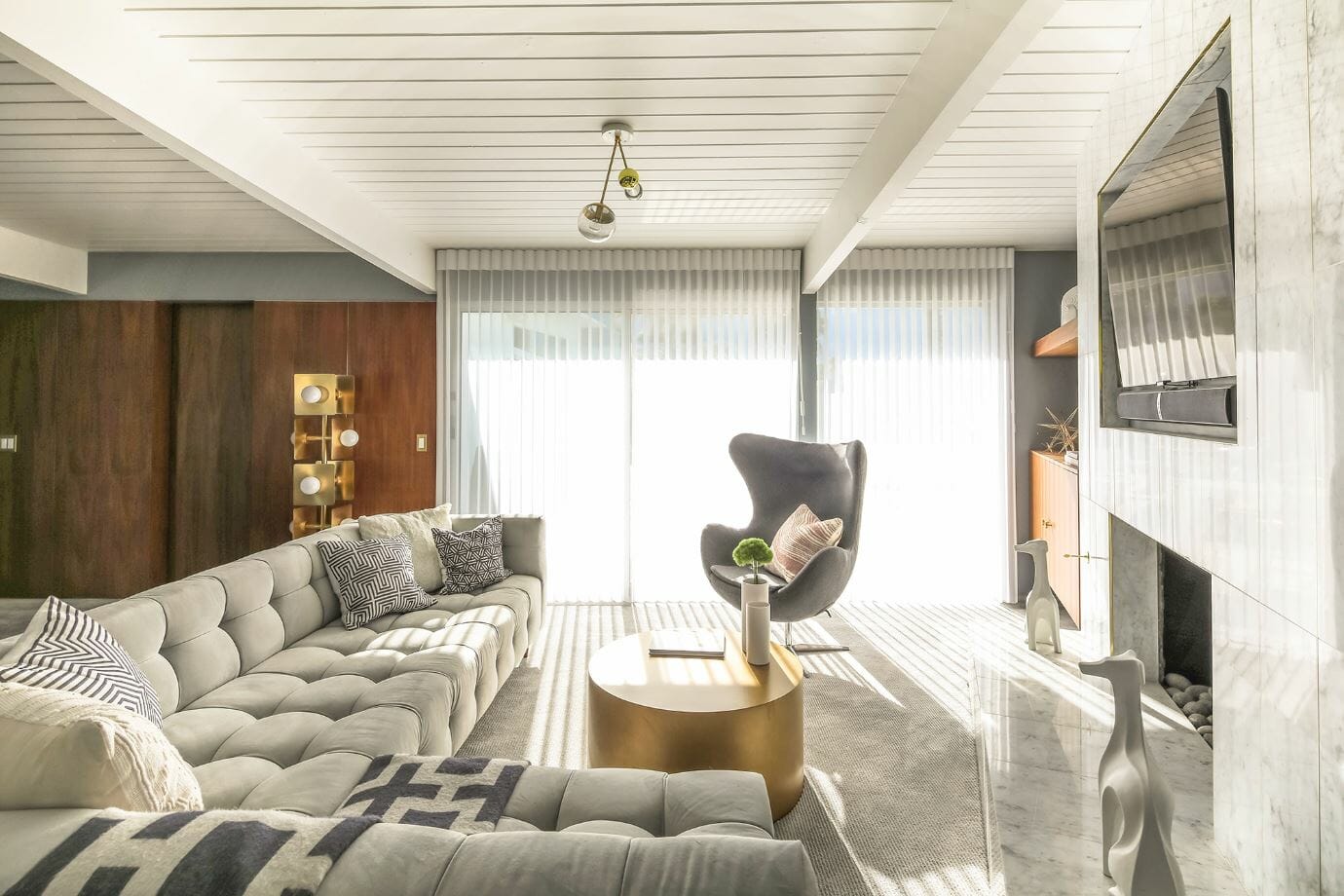
Here comes one classic that seems to stay relevant no matter the decade. Mid-century interiors started in the 1950s and ’60s in post-war America. During this time, the design industry was trying to break out of its traditional barriers and dive into the modern era. Stamping this style’s timeless quality are so many popular mid-century modern furniture pieces—still as relevant as ever and beloved in our homes. Yes, we talk versions of iconic furniture such as the Eames lounger, the egg chair, or the wishbone chair.
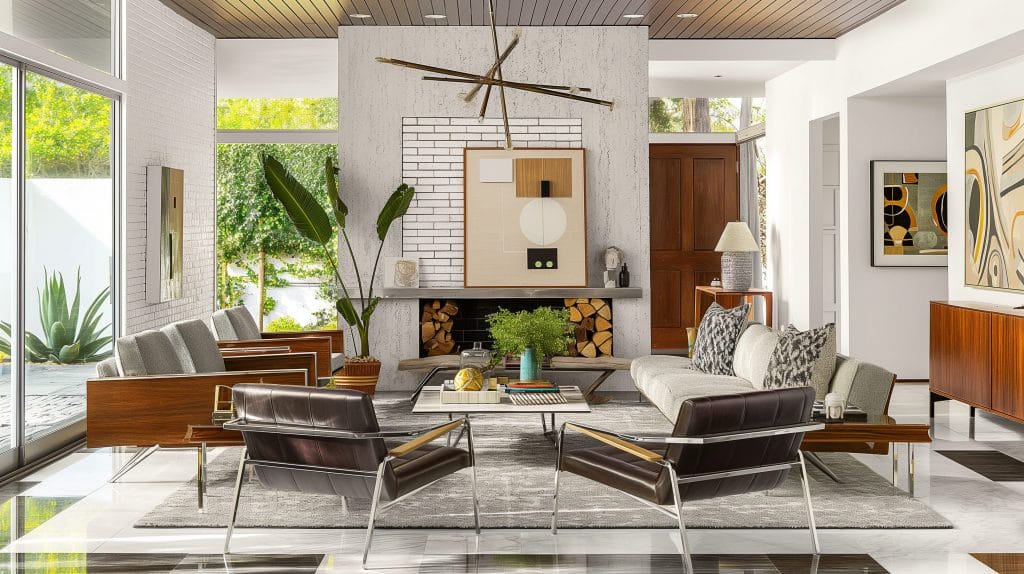
Mid-century modern homes have a breezy and seamless flow. They reflect the same period’s architecture, which always encouraged indoor-outdoor living. Sliding doors and picture windows were left bare to emphasize the connection to nature. Rich and luxurious woods such as teak, rosewood, and walnut were regularly used—a perfect backdrop for accents of mustard yellow, chartreuse, or avocado often used for a pop of color.
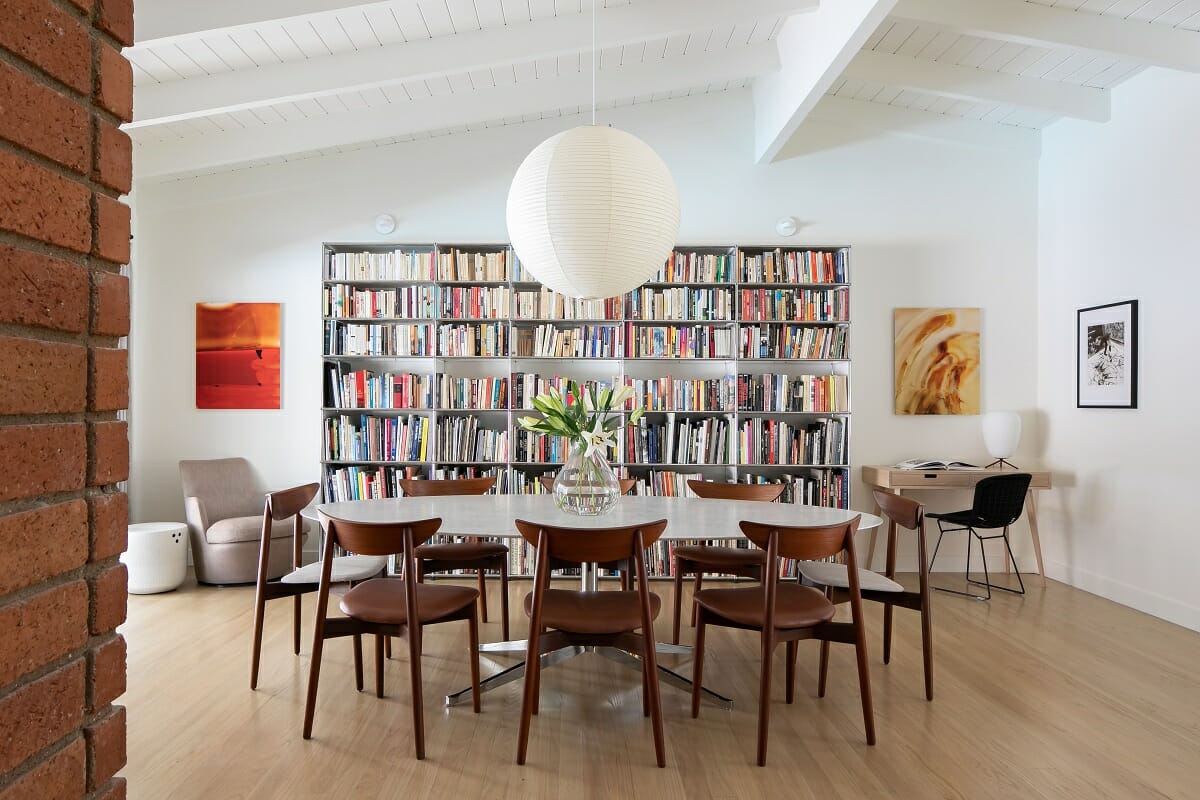
The mid-century revival we’re seeing in today’s design industry makes this popular interior design style more achievable than ever. Mid-century modern interior design styles of today strike a delicate balance between form and function, combining timeless elegance with forward-thinking innovation.
Pro Tip: Mid-Century Modern Furniture‘s enduring appeal and adaptability make it a go-to approach for those seeking to add some retro flair to their contemporary homes.
Bohemian Interior Design Style
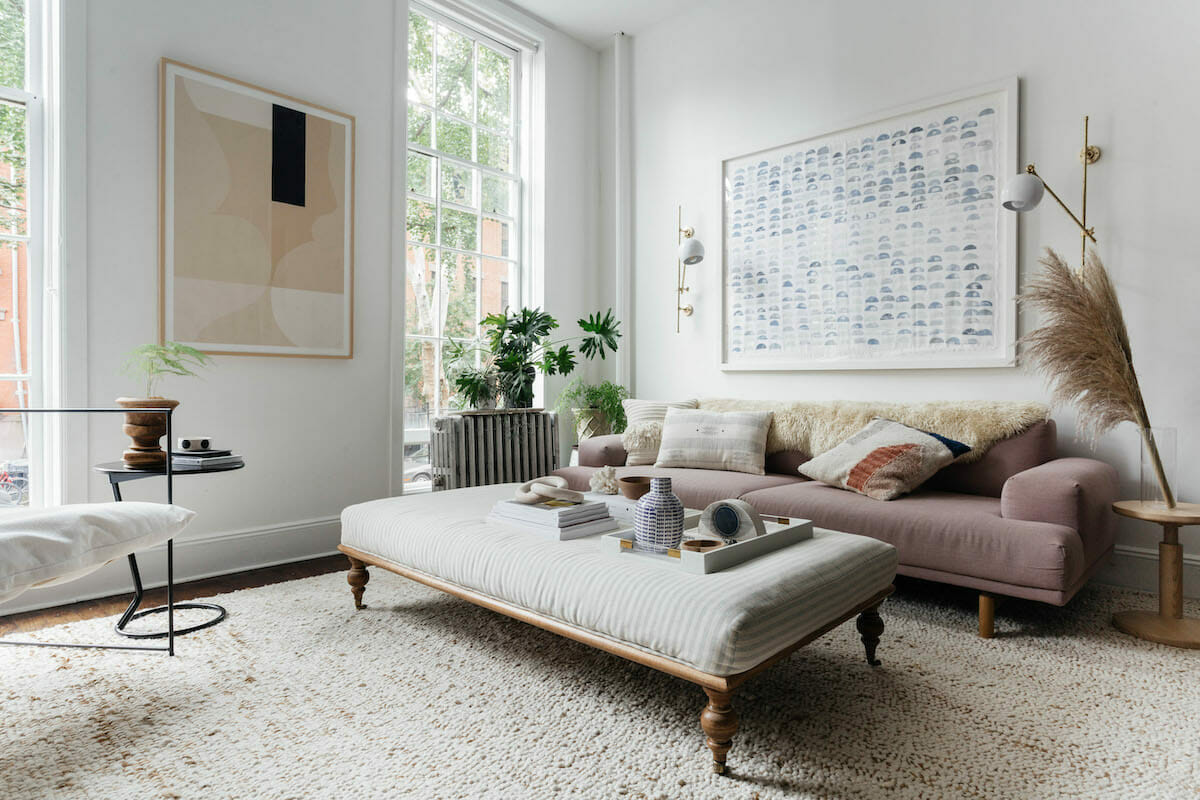
Similarly to the mid-century style, bohemian interiors are continuing to gain popularity decades after their introduction. And with so many retailers jumping on the boho train, there is no better time than now to explore your bohemian side.
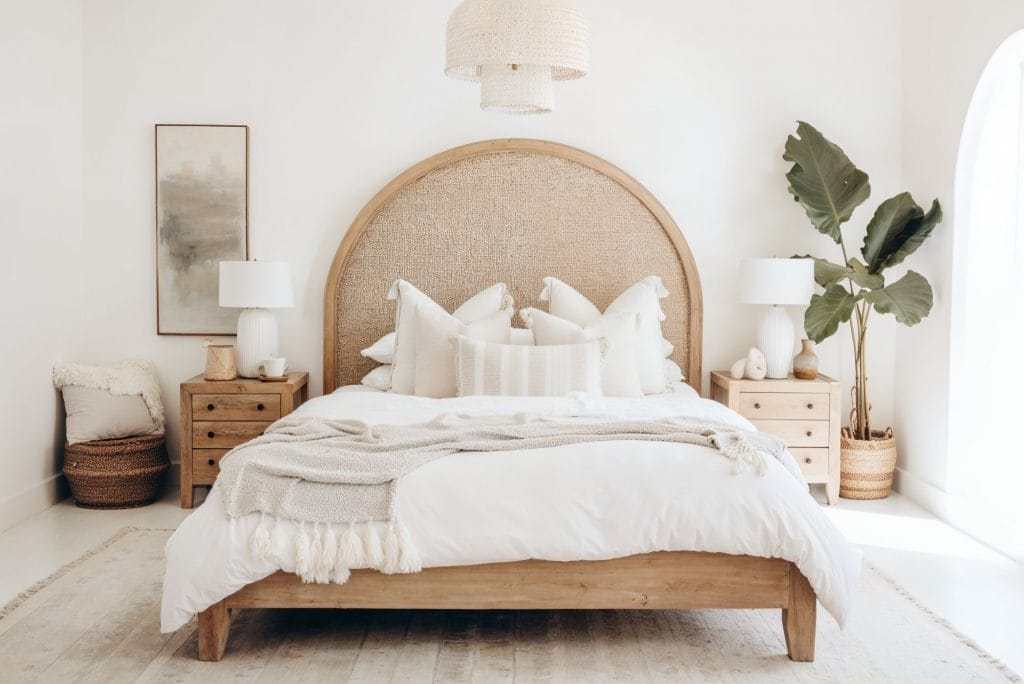
In a nutshell, bohemian design is a free-spirited aesthetic. It mixes different cultures and artistic expressions into an eclectic approach that dares to tread outside the lines. Also, contemporary laid-back boho atmosphere places a strong emphasis on nature. It is, however, not uncommon to find bold patterns and bright colors that defined original bohemian style rooms.
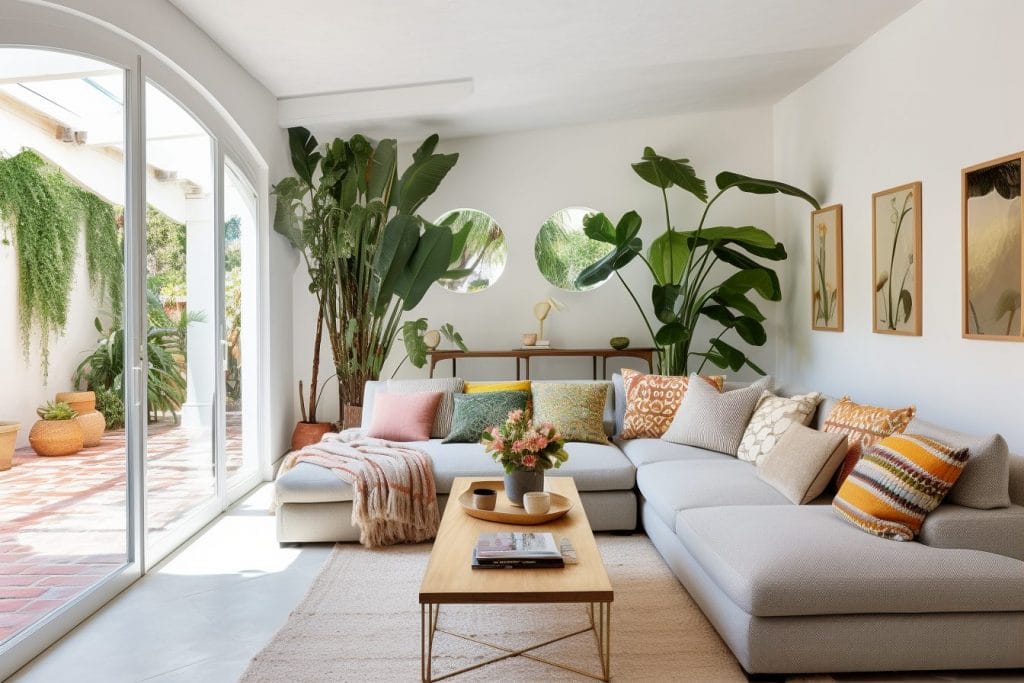
When we compare different interior design styles, we find boho among the few where order isn’t necessary. You walk into a home that boasts a bohemian design style, and immediately feel immersed in another culture. Trinkets are displayed from travels, and the whole vibe usually feels very nomadic. The addition of animal hides, metallic accents, and rich wood sometimes helps modernize this vibe.
Pro Tip: Use things in unconventional ways in Bohemian Interior Design, like hanging a vintage rug or carved wood on the wall for a fresh take on artwork.
Modern Farmhouse Interior Design Style

Our list of house décor styles wouldn’t be complete without modern farmhouse interior design. Modern farmhouse interiors have many characteristics of what we know as traditional farmhouse design. On the other hand, things become simpler and cleaner without losing their character. Joanna Gaines has earned the title of MFM queen mainly for blending her farmhouse aesthetic into a more modern and collected space.
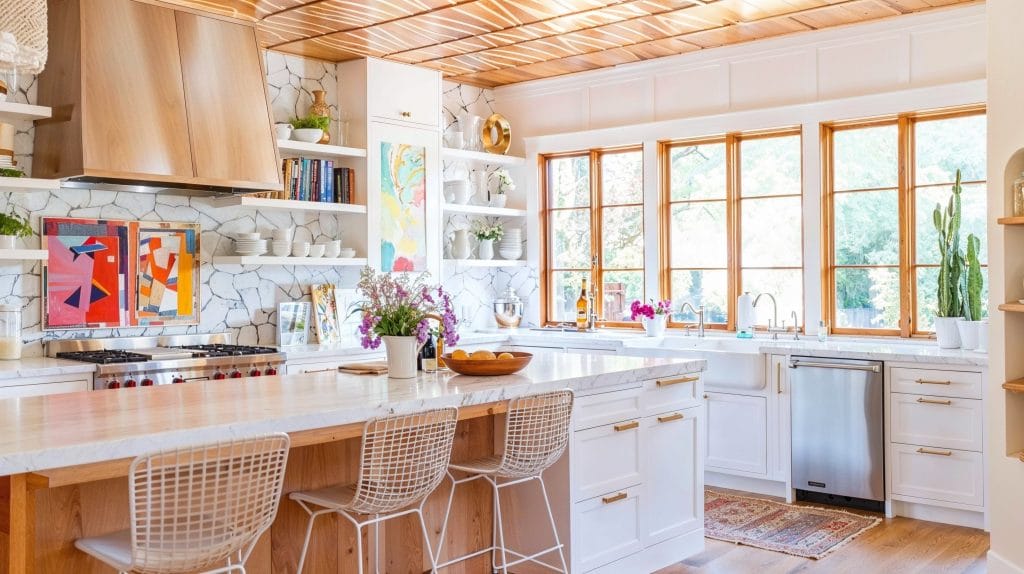
Shiplap might be a key staple of a modern farmhouse look, hand in hand with ubiquitous barn doors galore. Modern updates like wide plank floors, open concept living, and sleek lighting are other common identifiers of the modern farmhouse decorating style. Farmhouse interiors are also known for mixing metals: from gold to black to nickel, contrast is your friend here.
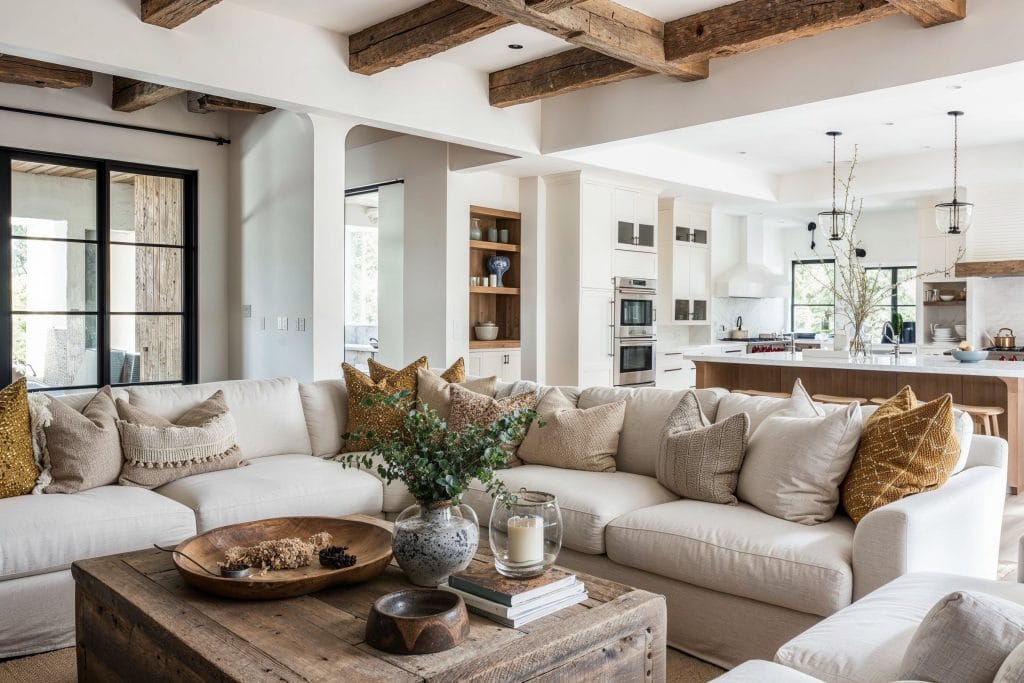
What we love about this design style is how it takes its connection to nature seriously. It’s not only the indoors-outdoors connection; raw wood and greenery are key elements in every room. Consequently, color palettes in modern farmhouse interiors are always on the neutral side.
Pro Tip: When you want to add that extra pop of color into your Modern Farmhouse Interior Design, pull from nature—try sage green or burnt orange.
Shabby Chic Interior Design Style
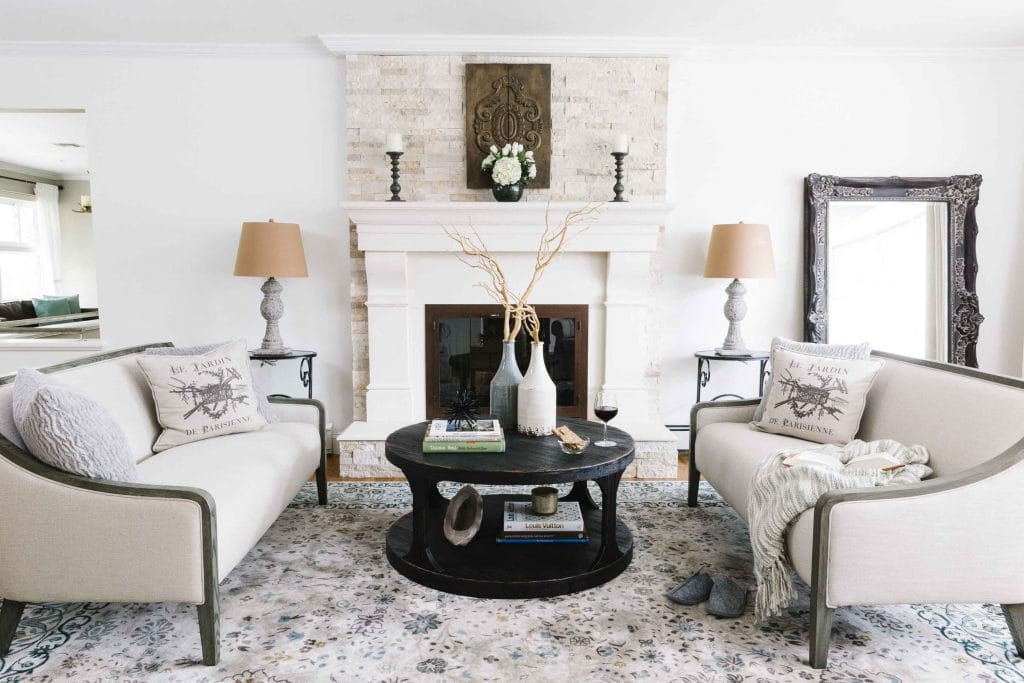
Is shabby chic one of those interior design styles that seem like new fast-fashion trends? You might find it surprising that it actually originated in the 18th century and gradually transformed into the vintage-loving style it is today. And that alone makes the strong case for non-fast-fashion: vintage furniture has always been at the core of shabby chic interior design.

In fact, it was common for individuals to pass down furniture from one generation to the next, each adding its own touch. The allure of shabby chic spaces lies in that history, accumulated without intervention. Imperfections are not a “damage,” they are heritage, family memories. Nothing in the room tries to look new, but also nothing is preserved as if frozen. Materials lose sharpness naturally and are left that way.
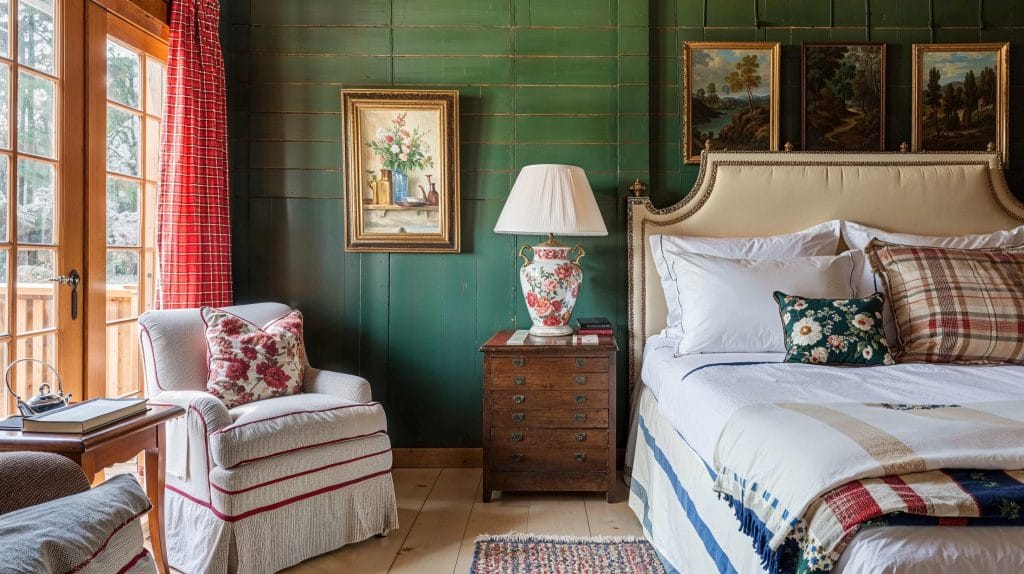
Similar to its design sister, French country, shabby chic design has a very soft and feminine feel. Furniture is often painted white or distressed. Gentle color palettes and floral patterns pair perfectly with whitewashed floors and walls. Our designers love this specific rustic vibe and how it can be contrasted with glamorous accents or blended with other house decor styles.
Pro Tip: Allow the space to stays open to the damage, because Shabby Chic Interior Design shows how the room was used.
Coastal Interior Design Style
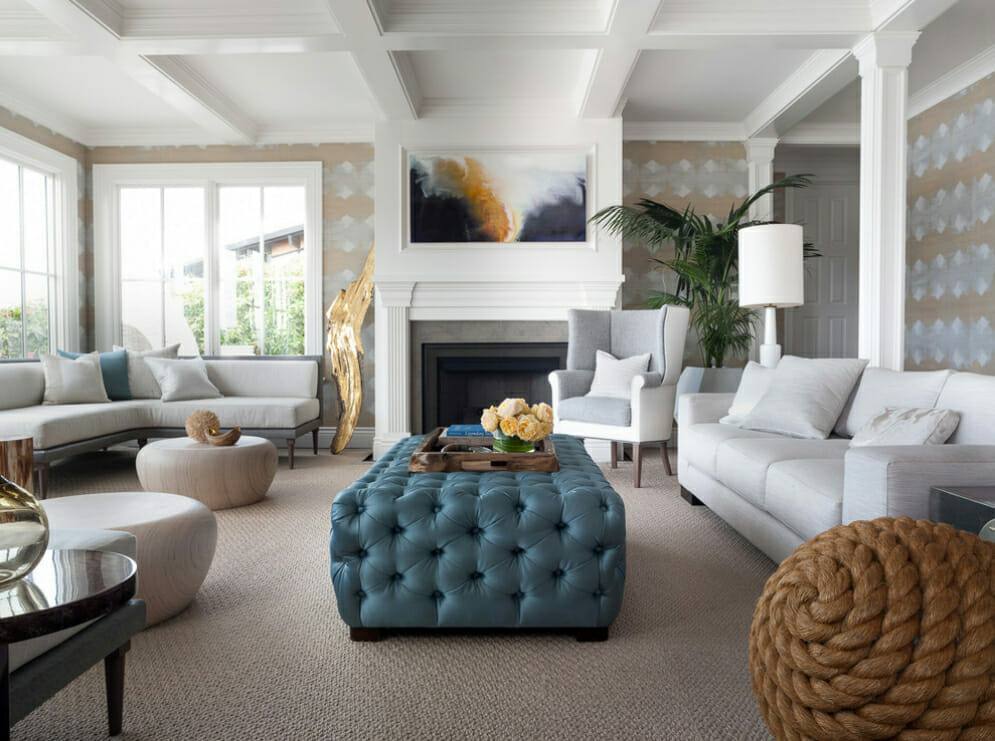
You don’t have to live by the beach to enjoy a coastal interior. Just don’t confuse it with nautical decoration, as they are different types of house decor styles. A coastal space doesn’t necessarily rely on a pronounced seaside theming, it makes a note of its natural environment. You can achieve that through the color palette down to the materials used for furniture and accessories.
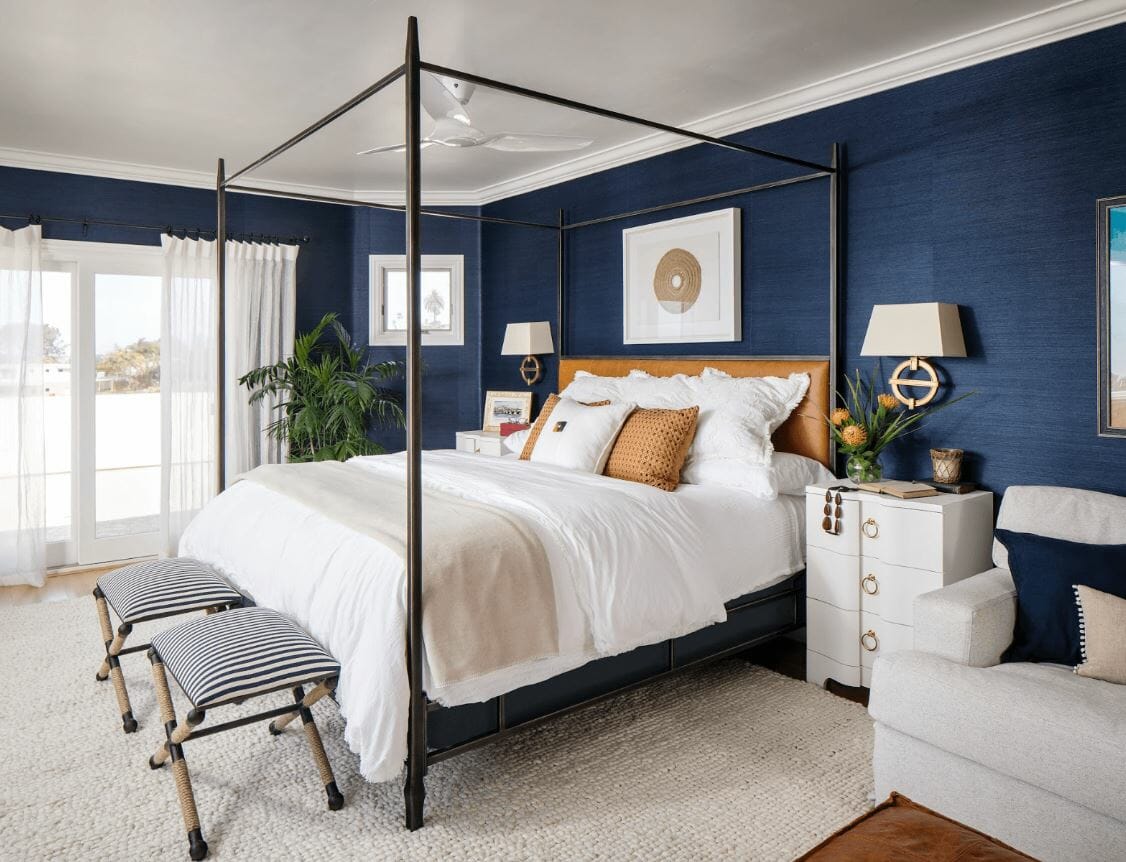
Neutrals, whites, beige are a common base that mimics the sand. At the same time, pops of blues resemble the surf, sea, and bright summer skies. This is something non-negotiable: coastal style homes should always feel bright and breezy. The intention is to genuinely connect the indoors with the outdoors. For the same reason, window treatments are kept to a minimum. A light sheer fabric blowing in the wind is usually enough to get the coastal vibe across.
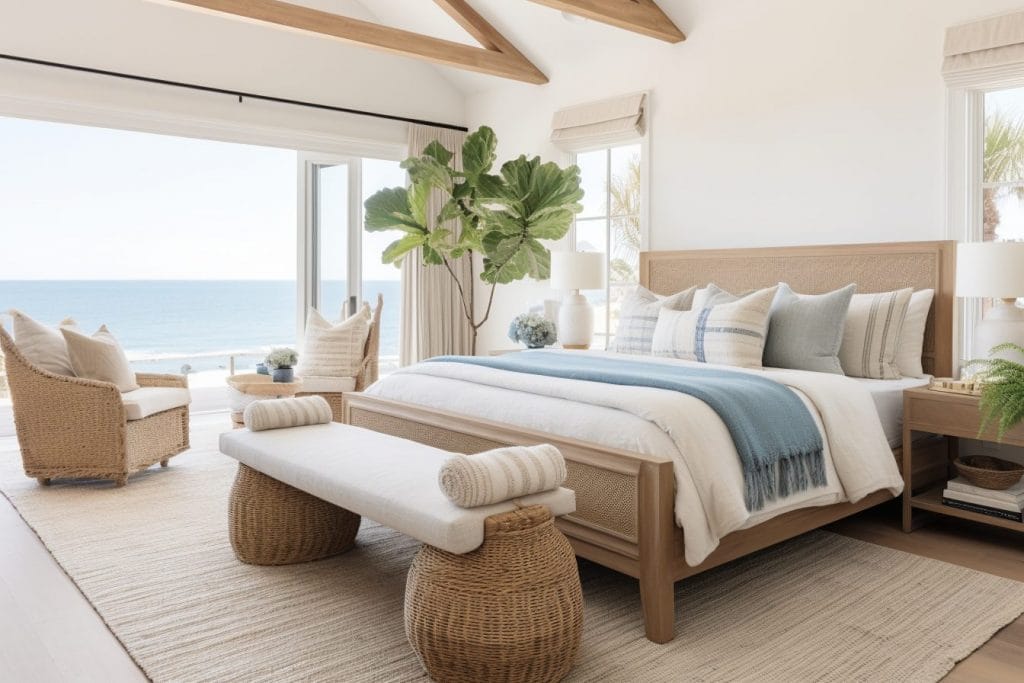
You won’t find anchors and seashells scattered everywhere in this design style. Instead, you’ll find blue glass vases, striped wallpaper, or abstract paintings that get the coastal feeling across. And as for the best furniture for coastal interiors, they have a very comfortable lived-in feel. Painted and distressed furniture paired with wicker or jute makes for a match made in heaven.
Pro Tip: Connecting to nature is so important with the Coastal Interior Design style that indoor plants are a must-have.
Hollywood Glam Interior Design Style
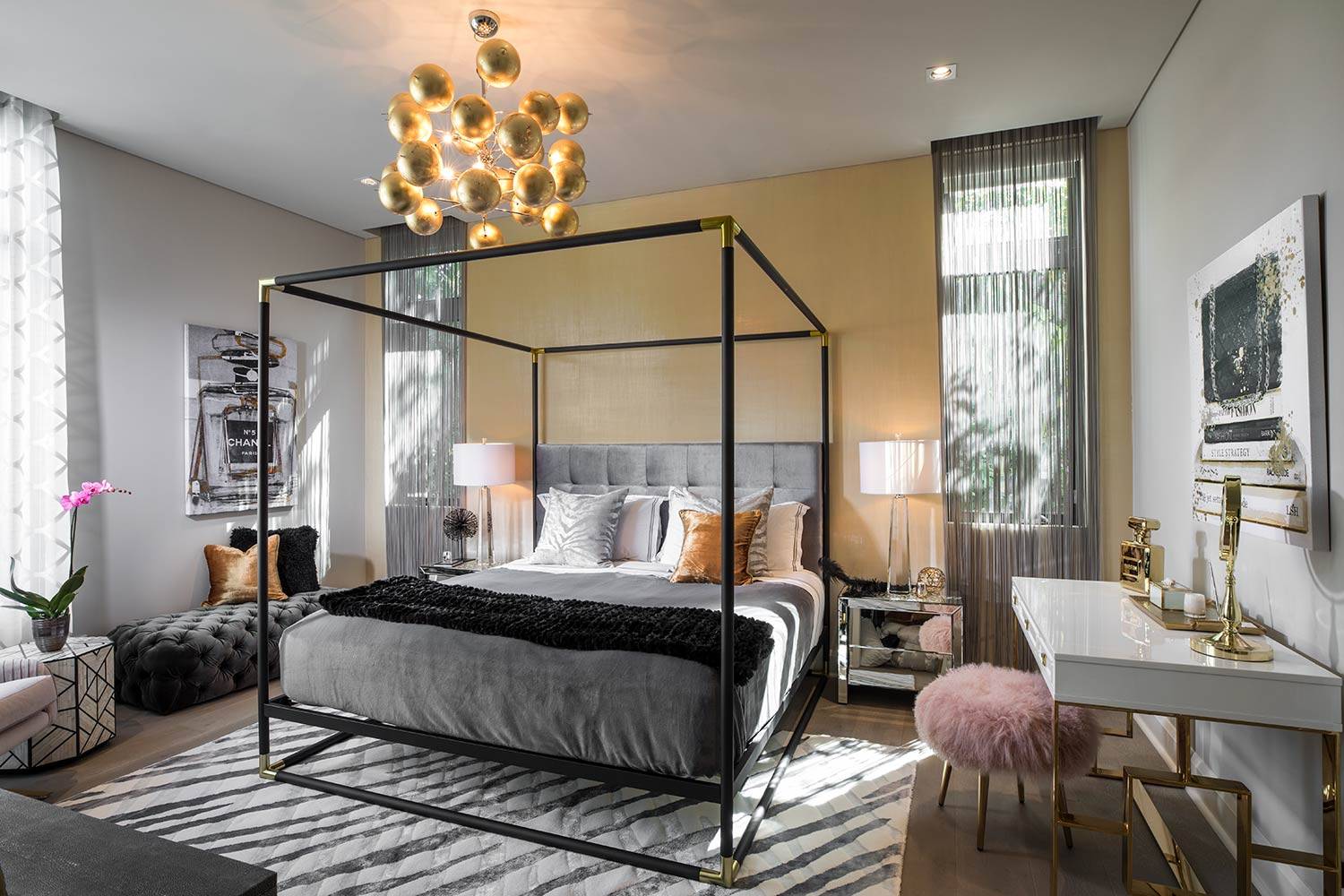
Next on the list of decorating styles relevant in 2026 is Hollywood glam. This chic style has been most popular in California since the mid-twentieth century, dating all the way back to Hollywood’s golden age in the 1930s. Hollywood glam interiors are made up of a mix of art deco and mid-century modern. This is an interior design style that is here to be seen.
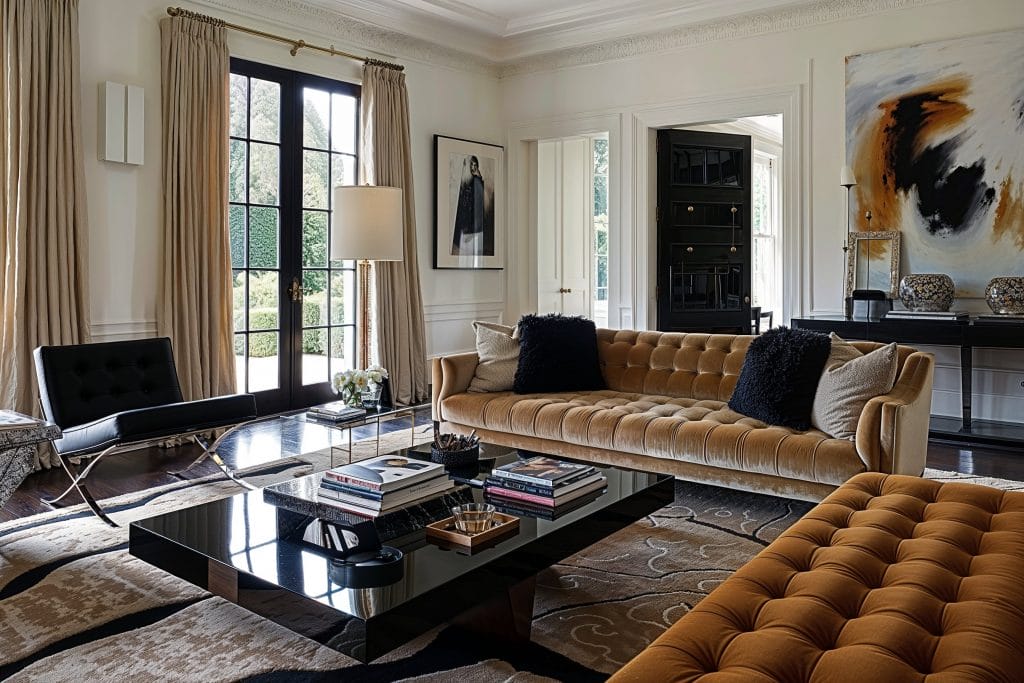
High contrasts are a popular choice for color schemes. Common combinations include hot pink and green, but also black and white. Over-the-top chandeliers are paired with high-gloss or mirrored furniture to establish a proprietary, glamorous-luxurious vibe. As a result, this unique interior design style is sexy and sophisticated at the same time.
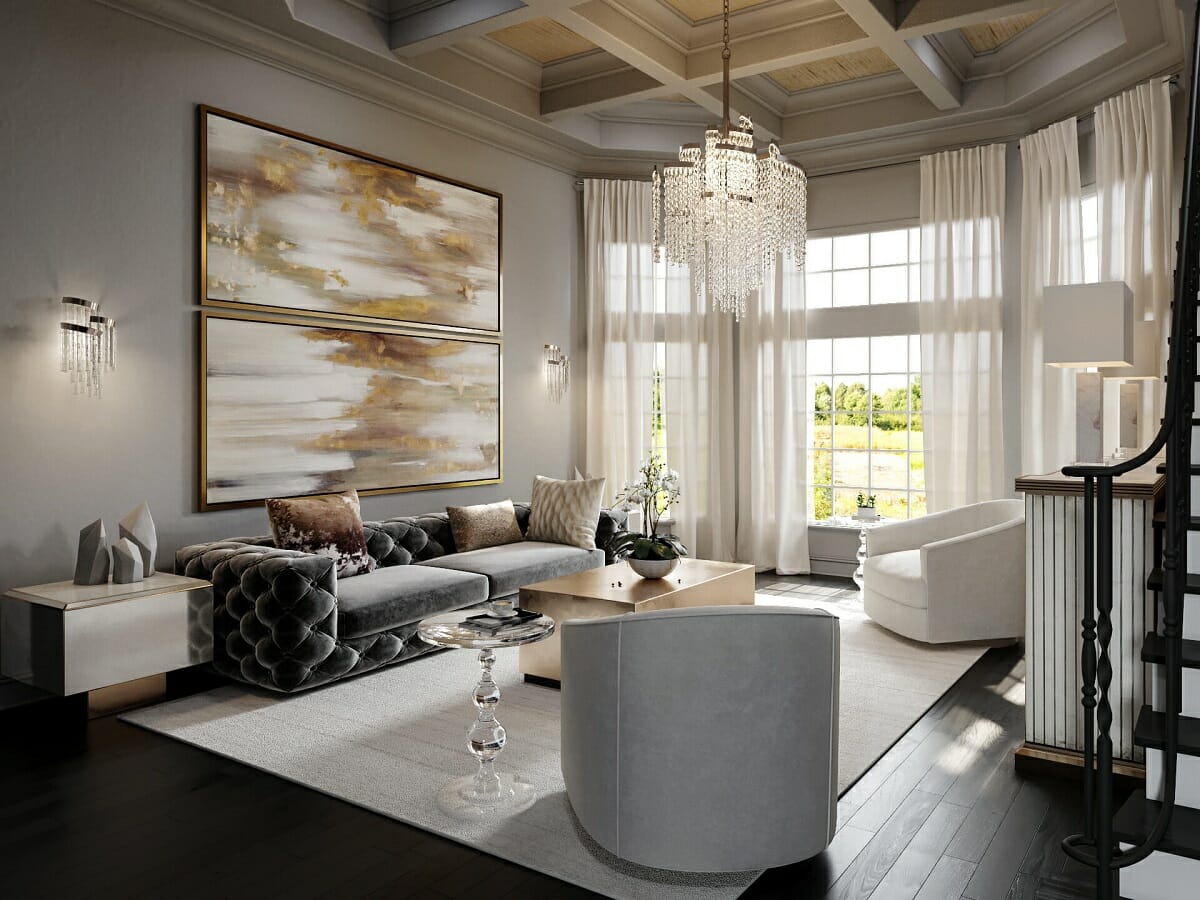
Hollywood glam interiors are perfect for hosting fancy soirees. For this reason, it’s not unusual to see foyers or entrance living rooms fully embracing an air of high-end hospitality.
Pro Tip: Hollywood Glam Style is built in layers. A few bold elements control the mood better than excess.
Southwestern Interior Design Style
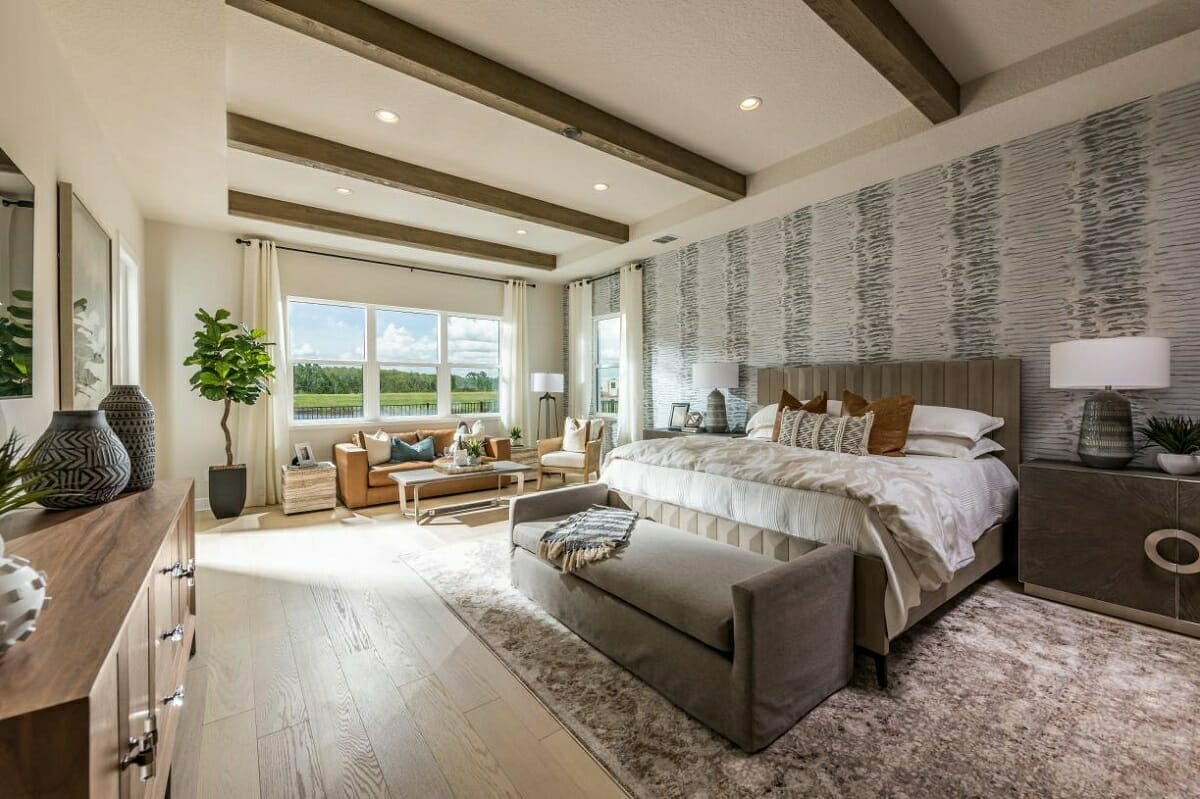
The southwestern style as we know it today is not the same as it was when it first became noticeable in the design world. And it will continue evolving as the years pass by. Southwestern interiors gather their inspiration from the soft lines of adobe houses, Spanish textiles, ironwork and nature.
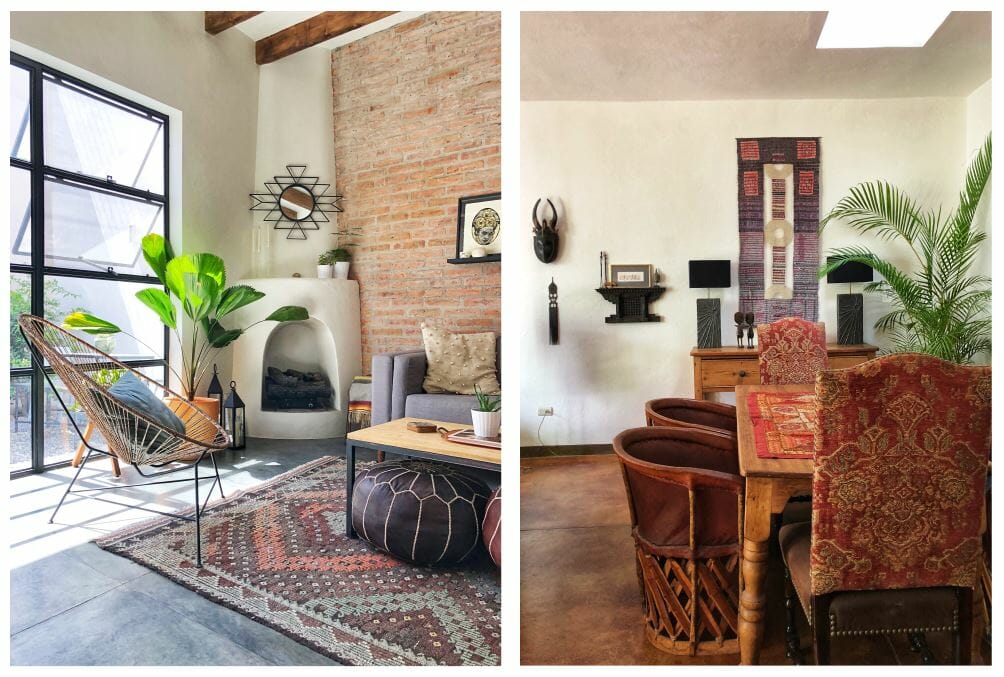
Color pallets have various colors found in the American desert. Rust, terracotta, and cactus green, are a few favorites amongst designers. Whereas furniture is more on the heavy side, often adorning thick legs and bulky finishes. Additionally, texture is southwestern interior design’s best friend. Leather and suede are the most common upholstery material.
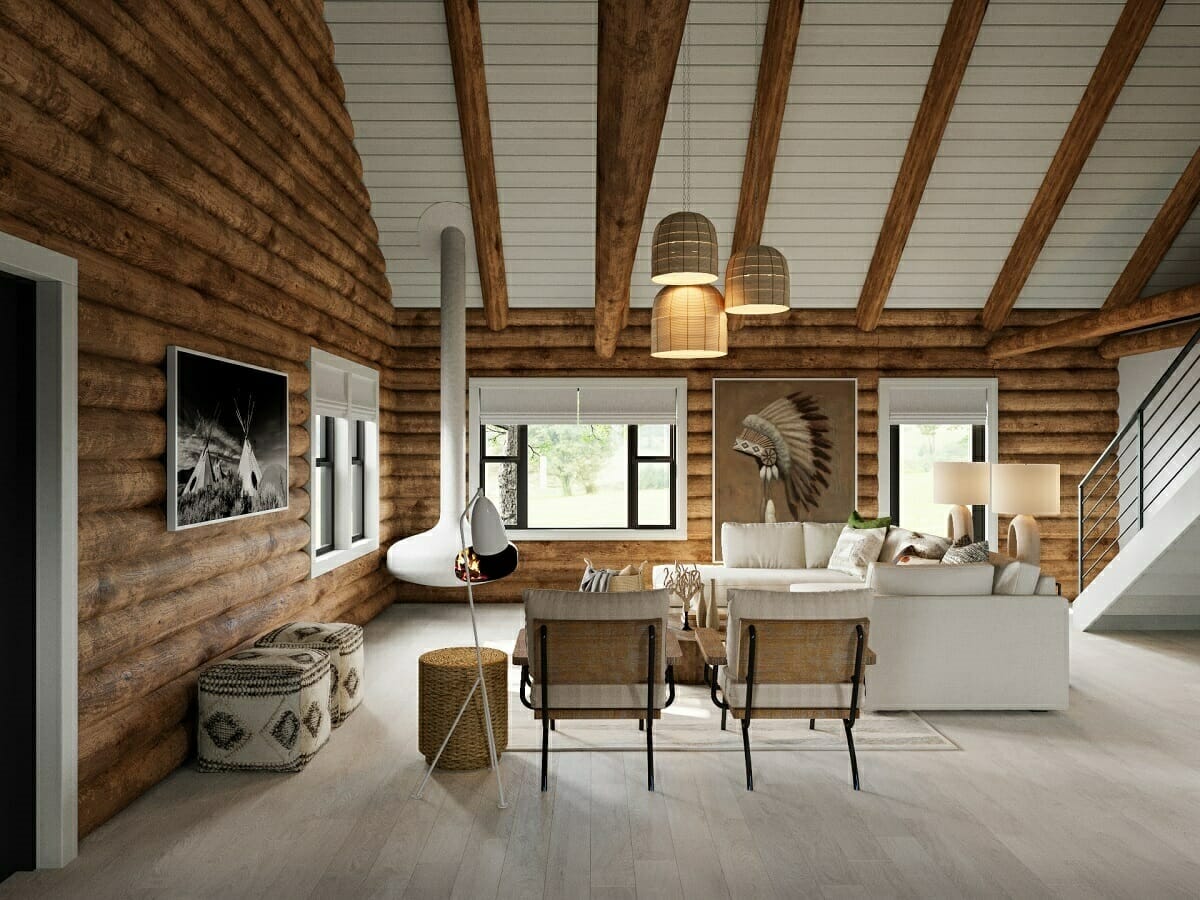
Different types of Southwest interior design styles are also popping up in more homes. It’s not uncommon to see Southwestern elements in a modern setting or combined with boho elements in a rustic cabin.
Pro Tip: For Southwestern Interior Design, let the palette pull from the landscape and use bright accents only in controlled, intentional bursts.
Rustic Interior Design Style
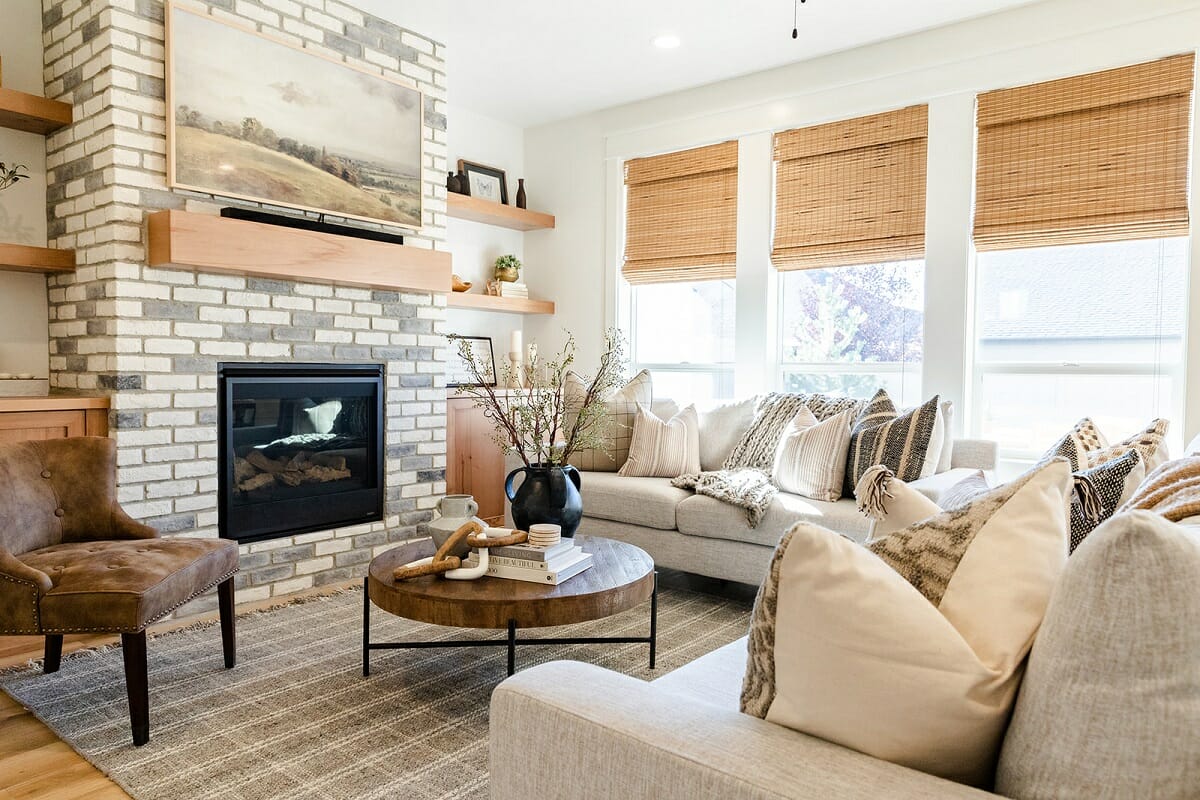
Rustic interior design it can be defined with a few basic signs. There will always be roughly finished natural materials, possibly some industrial touches, and farmhouse/cabin charm all around. The rustic design style was originally born from inspirations of the Romantic movement. It focuses on the simplicity and effortless beauty of nature.

Living room design ideas for rustic interiors often revolve around a central statement fireplace. The abundance of wood is softened by cowhides and sheepskin that convey a proprietary cozy feeling. Fabrics don’t have loud patterns, and texture is an absolute non-negotiable.
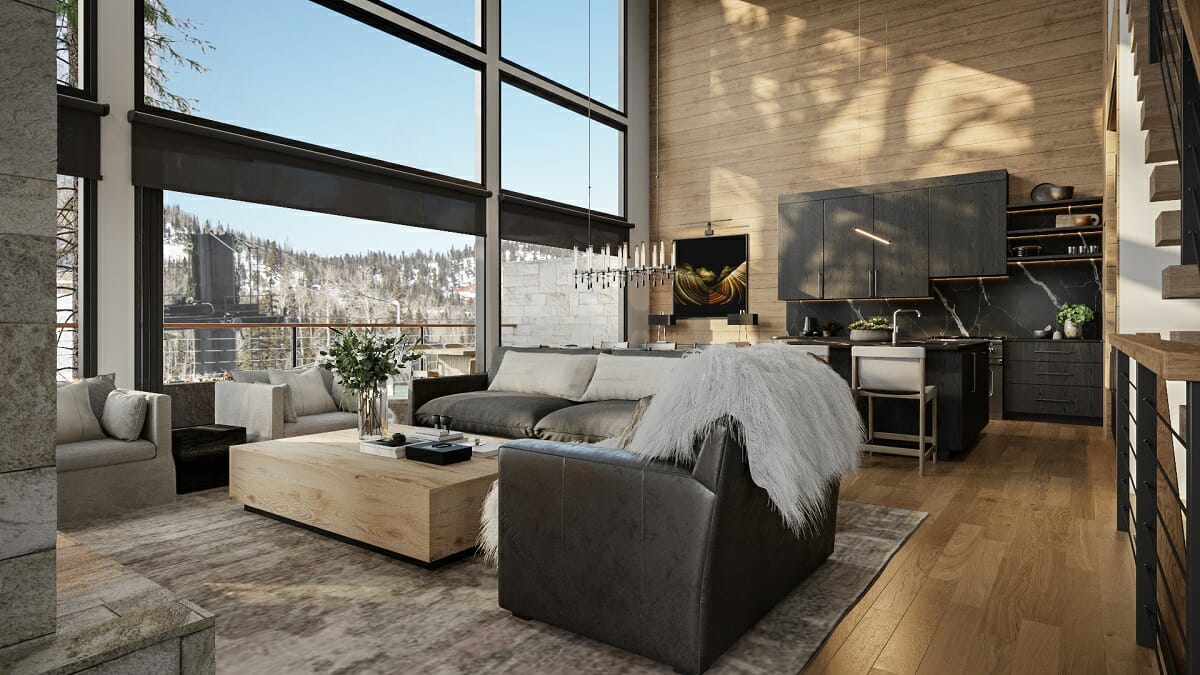
Unexpected additions like metal shelves or industrial pendant lights add to a specific atmosphere which we know as modern rustic interior design. Moreover, contemporary interior design styles thrive on bending the rules, so you can even find glam elements such as crystal chandeliers well-integrated in a mainly rustic room.
Pro Tip: Surfaces should show texture in Rustic Interior Design. Rough stone, weathered wood—materials should look and feel unfinished.
Industrial Interior Design Style
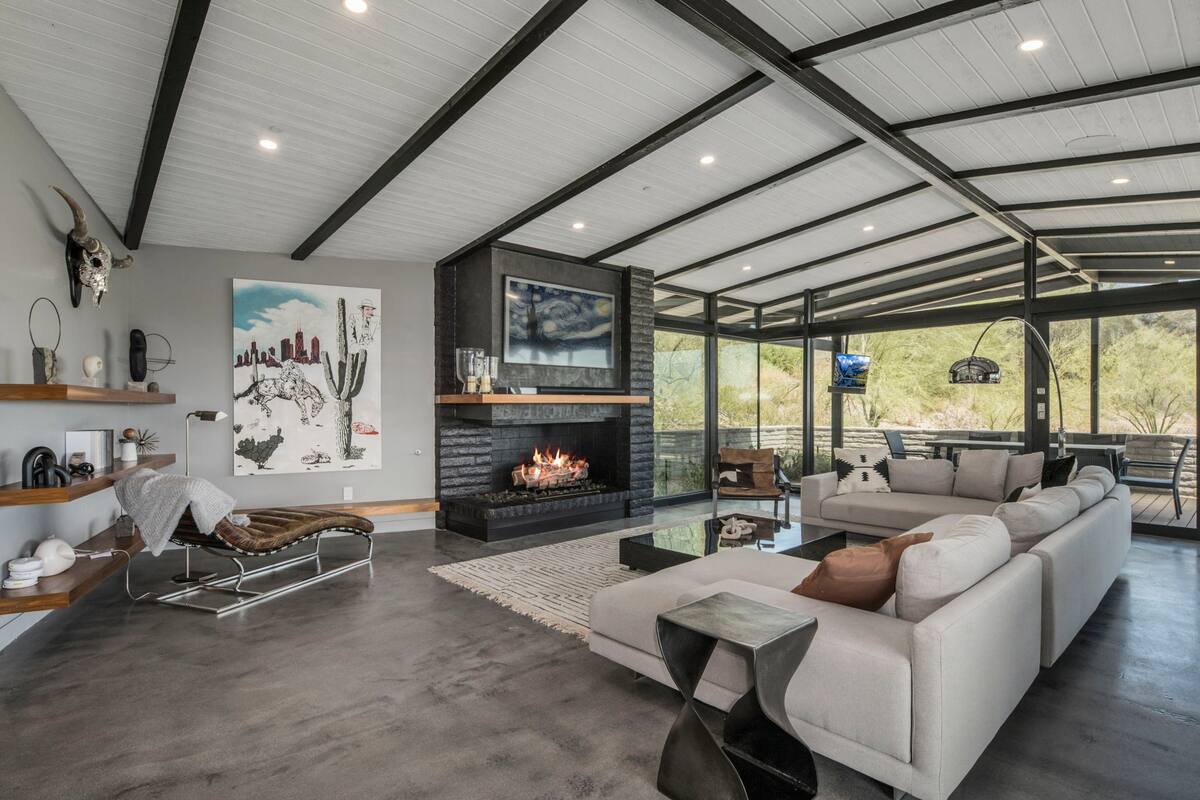
While one may argue that industrial interior design is trendy, it has a rich history. When Western European factories closed at the end of the Second Industrial Revolution, they left many large, vacant buildings behind. The population increase led people to convert industrial areas into residential neighborhoods.
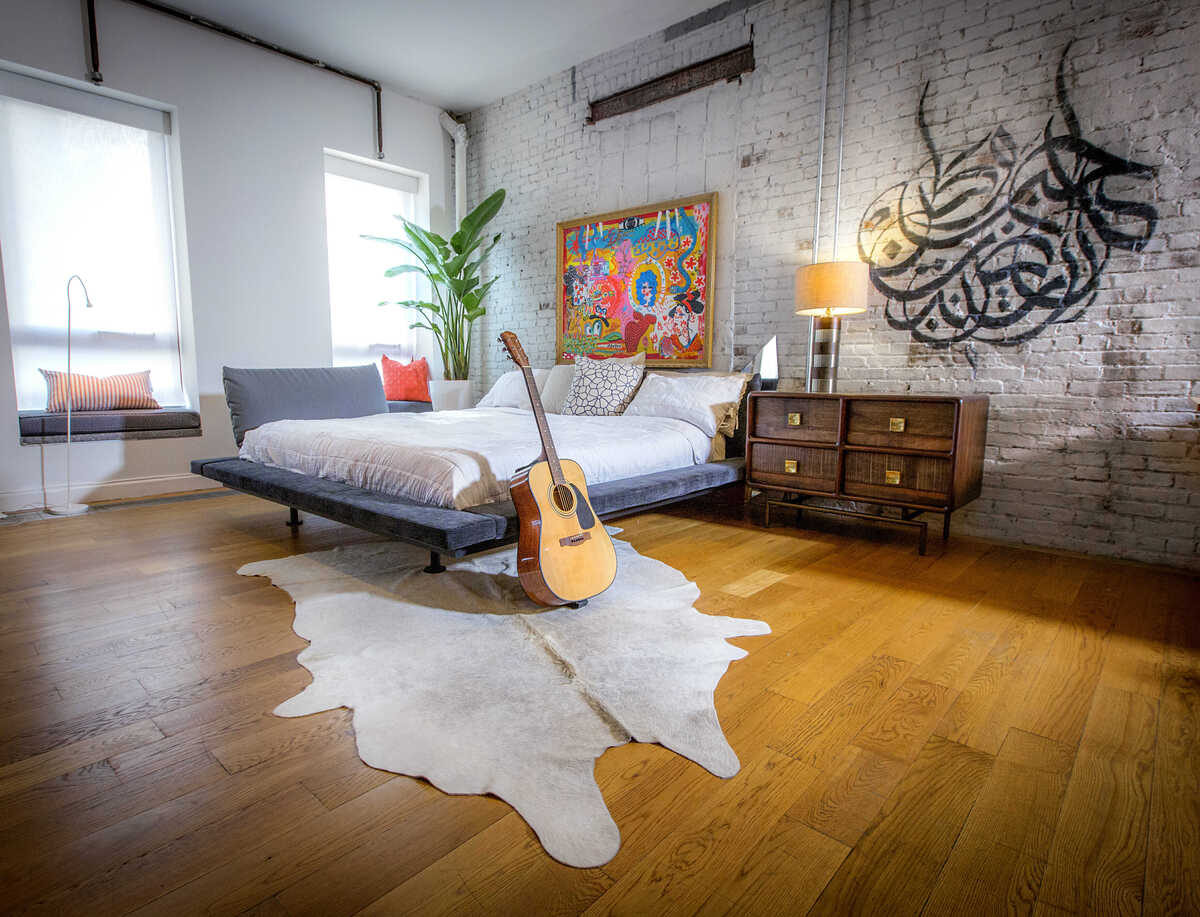
The industrial interior design style of today still loves exposed pipes and beams. Brick and concrete, staples of a NYC loft look, not only belong but give the space a strong, on-point character. You won’t hear the words “gentle” or “intimate” used when describing unique interior design styles like this one. Its masculine tendencies are tamed only with curated soft accessories and ample texture.
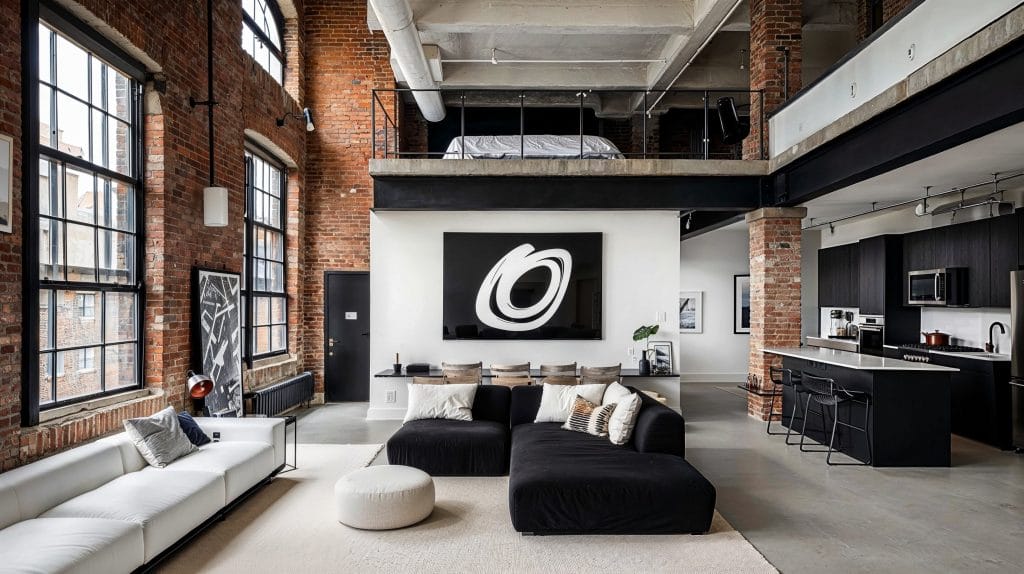
Moreover, oversized artwork and cozy textiles are perfect additions to the contemporary industrial style. Furniture can be rustic or modern minimalist, often raw or unfinished, and paired with antiques.
Pro Tip: Expose structure in Industrial Interior Design wherever possible. Leave beams, pipes, brick, and mechanical elements visible without cosmetic smoothing.
French Country Interior Design Style

Similar to many other interior design styles, French country is a sophisticated blend of a few different favorites. Shabby chic, farmhouse, and traditional all play a role in this aesthetic that relies heavily on timeless/antique furniture pieces. Think tufted upholstery over weathered wood or a Louis VI chair updated with a modern print.
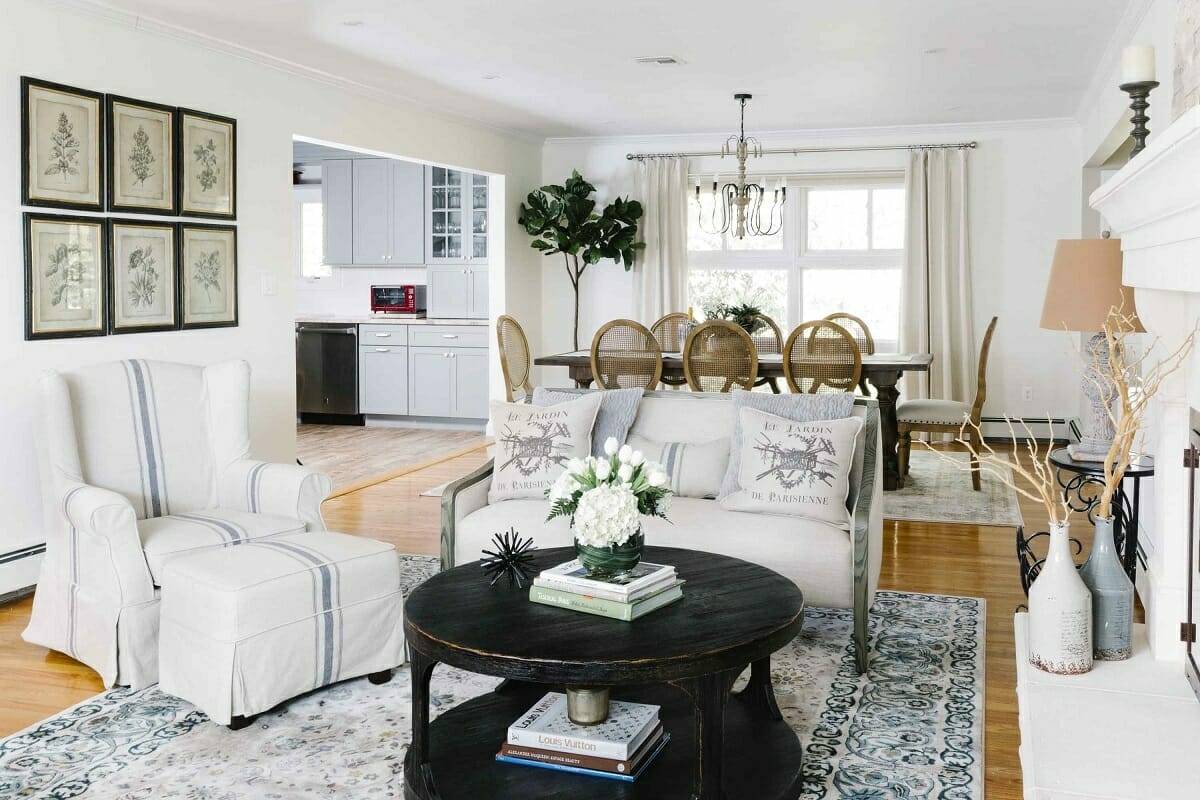
To achieve an authentic French country design style, natural materials like stone, wood, and wrought iron are commonly used. Exposed beams, distressed finishes, and raw textures add character to the space, showcasing the beauty of imperfections. Additionally, soft, muted colors dominate the palette, with shades of beige, cream, sage green, and lavender creating a serene and inviting atmosphere.
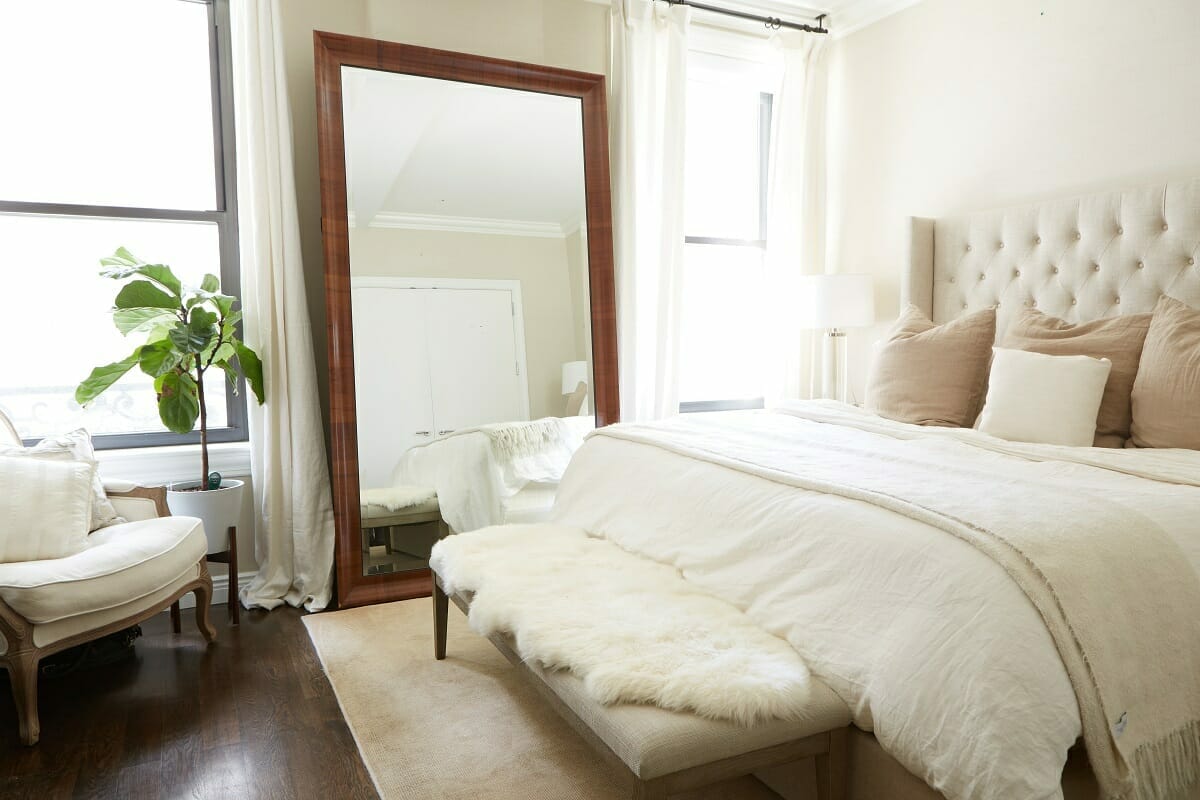
Whether it’s the gentle patina of weathered furniture or the flickering glow of candlelight, French country interiors have a magical way of evoking a sense of nostalgia and serenity. It’s a design style that captures the essence of a romantic countryside retreat, inviting you to immerse yourself in the welcoming atmosphere.
Pro Tip: French Country Interior Design loves blending feminine with neutral vibes.
Scandinavian Interior Design Style
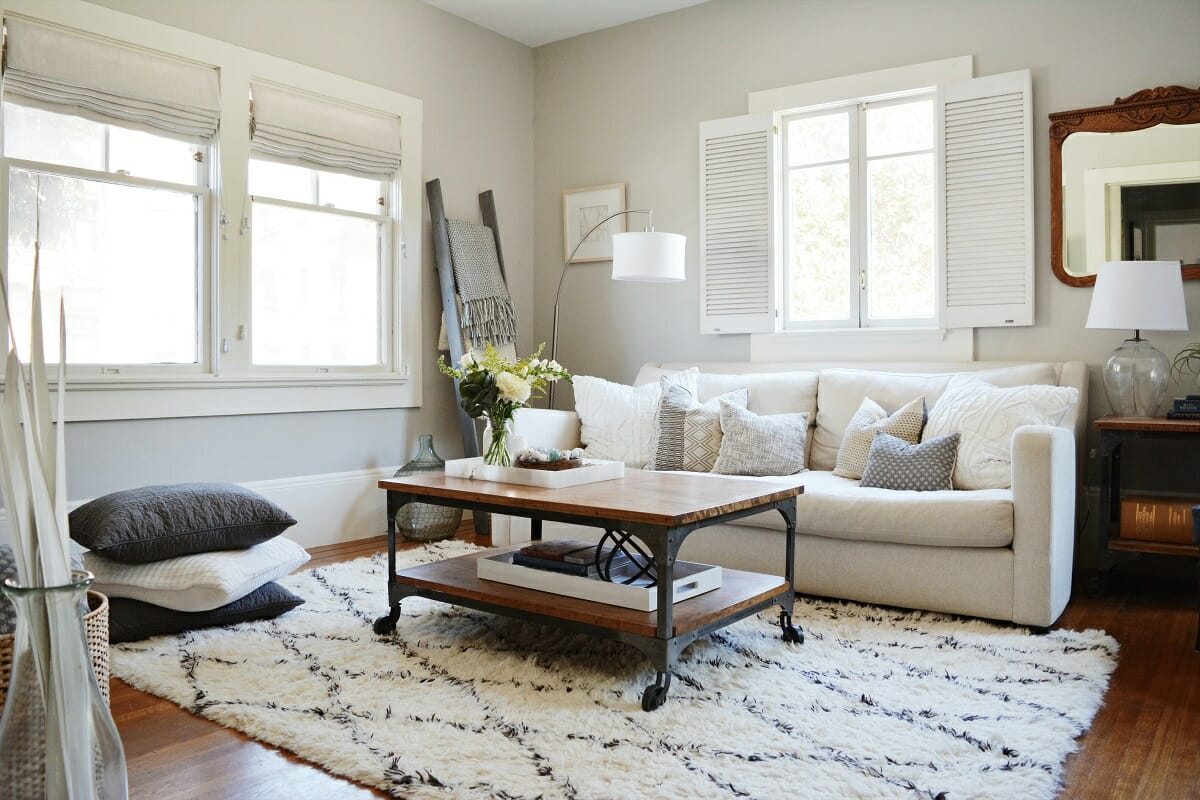
Scandinavian design is one of the easiest interior design types to recognize. Think simple, light, airy, and organic, immersed in a relaxing vibe—no Scandinavian space is complete without hygge. Key features include pale walls, sleek layouts, large mirrors, and cozy textiles in abundance. Moreover, woods are almost always an ashy color in Scandinavian interiors.
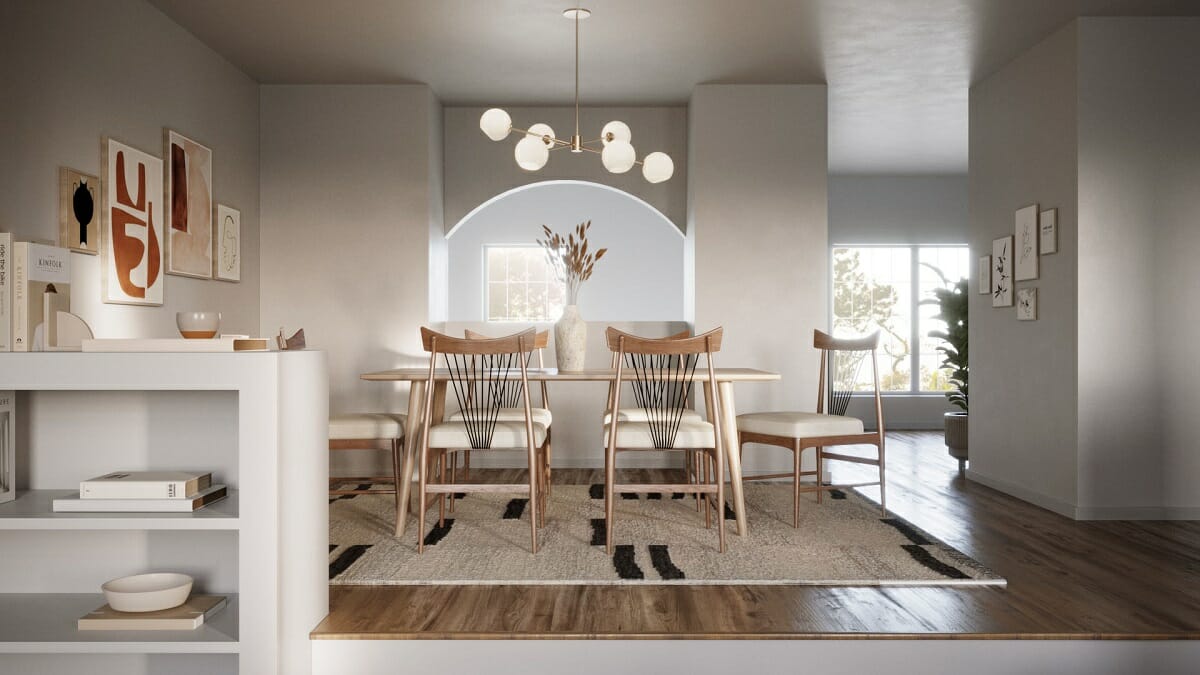
Another notable aspect of Scandinavian design is the attention to detail. The furniture and decor often feature clean lines or minimalist forms where aesthetical and practical aspects intertwine. Quality craftsmanship is highly valued; pieces are often built to last and designed with functionality in mind. Scandinavian interiors also prioritize open spaces, promoting uninterrupted flow and a feeling of freedom within the environment.
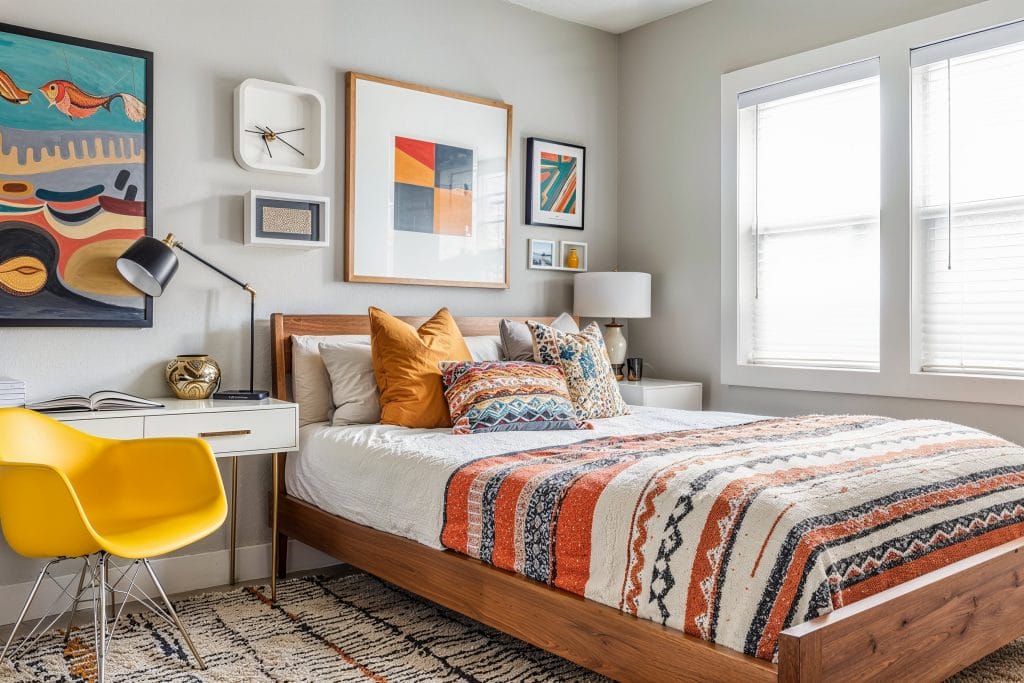
Along with the hygge, Scandinavian design also embraces a concept called “lagom,” which embodies the idea of finding balance and moderation. It emphasizes the importance of creating a harmonious living environment that is not excessive or overly extravagant. This philosophy extends to the choice of furniture, decor, and even the arrangement of objects in the space.
Pro Tip: Build Scandinavian Interior Design around light. Surfaces, furniture, and layouts should reflect and extend natural illumination, not absorb or block it.
Mediterranean Interior Design Style
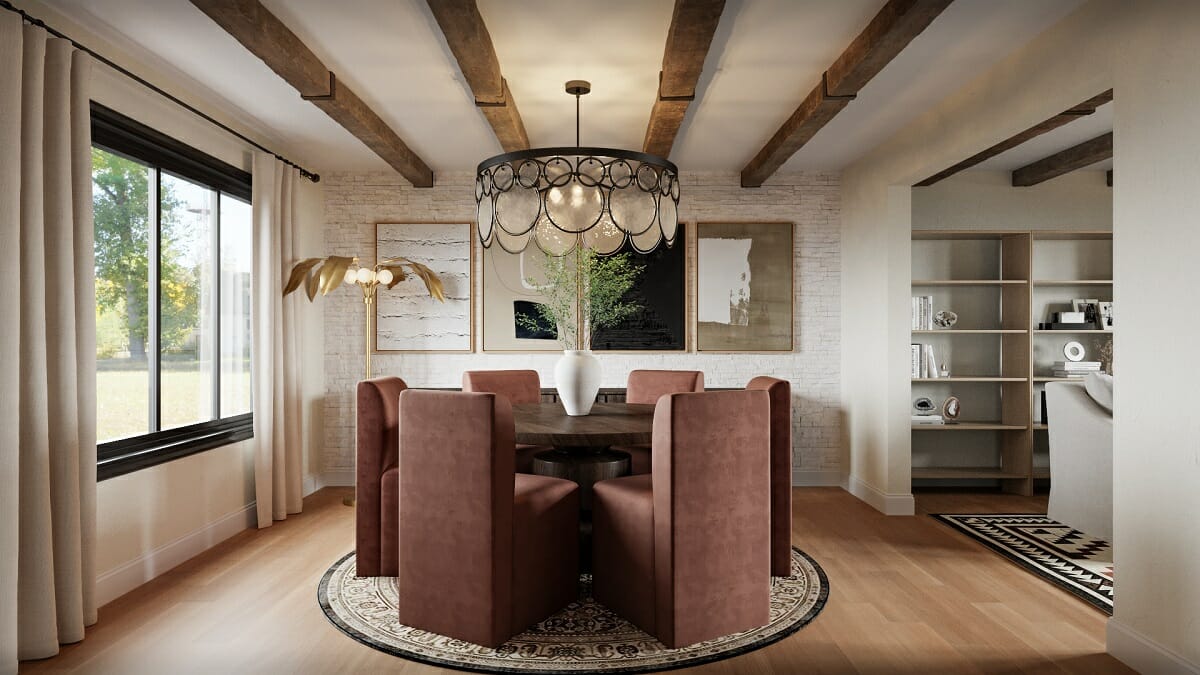
Here comes another culturally rich interior design style. As its name indicates, Mediterranean design started in countries north of the Mediterranean Sea. Spain, Greece, and Italy are still the main sources of inspiration today. In like fashion to the typical architecture of those countries, Mediterranean homes often feature arches, columns, interior balconies, rich wood tones, and ornate features.
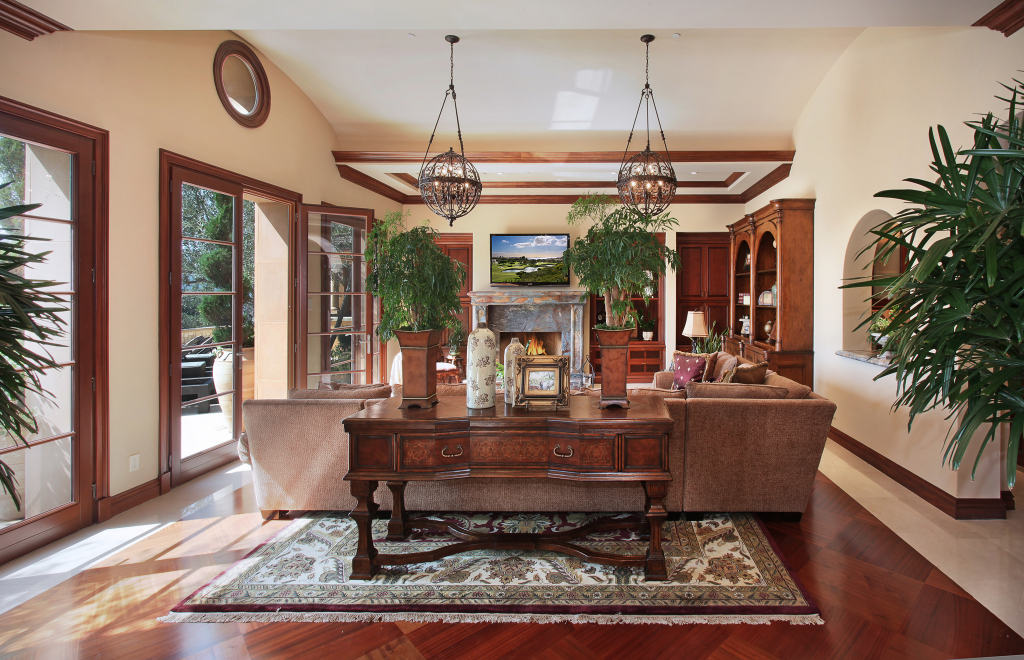
One distinct feature of this style is the use of vibrant earthy hues. The color palette often includes shades of terracotta, ochre, deep blues, and sandy neutrals, reflecting those found in the Mediterranean landscape. These schemes convey a powerful aura of warmth as well as a connection to the natural surroundings.
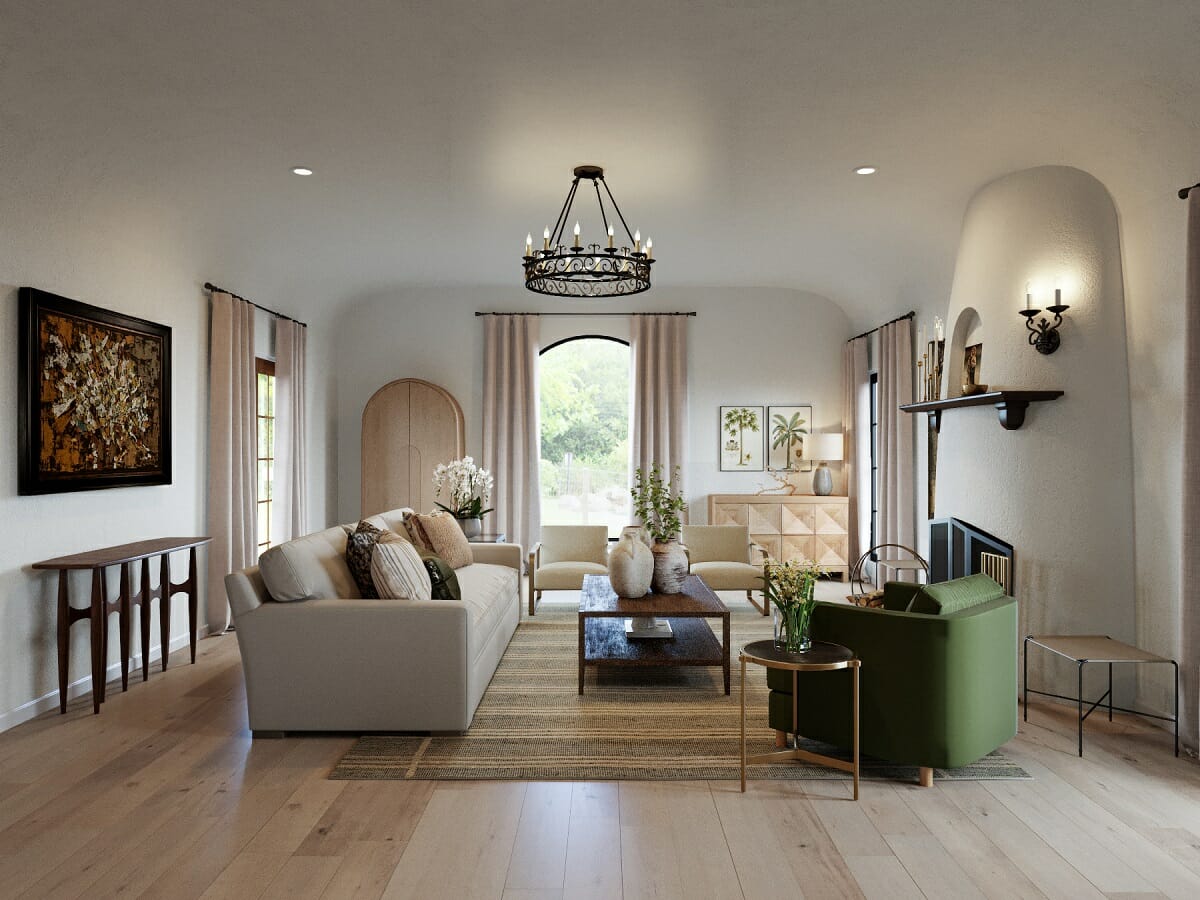
In addition to arches and columns, another architectural element commonly found in Mediterranean interiors is the use of decorative tiles and mosaics. Intricately patterned ceramic or terracotta tiles can be seen on floors, walls, and even staircases, adding a touch of traditional charm and visual interest.
Pro Tip: Mediterranean Interior Design loves wrought iron in anything from coffee tables to chandeliers.
Art Deco Interior Design Style
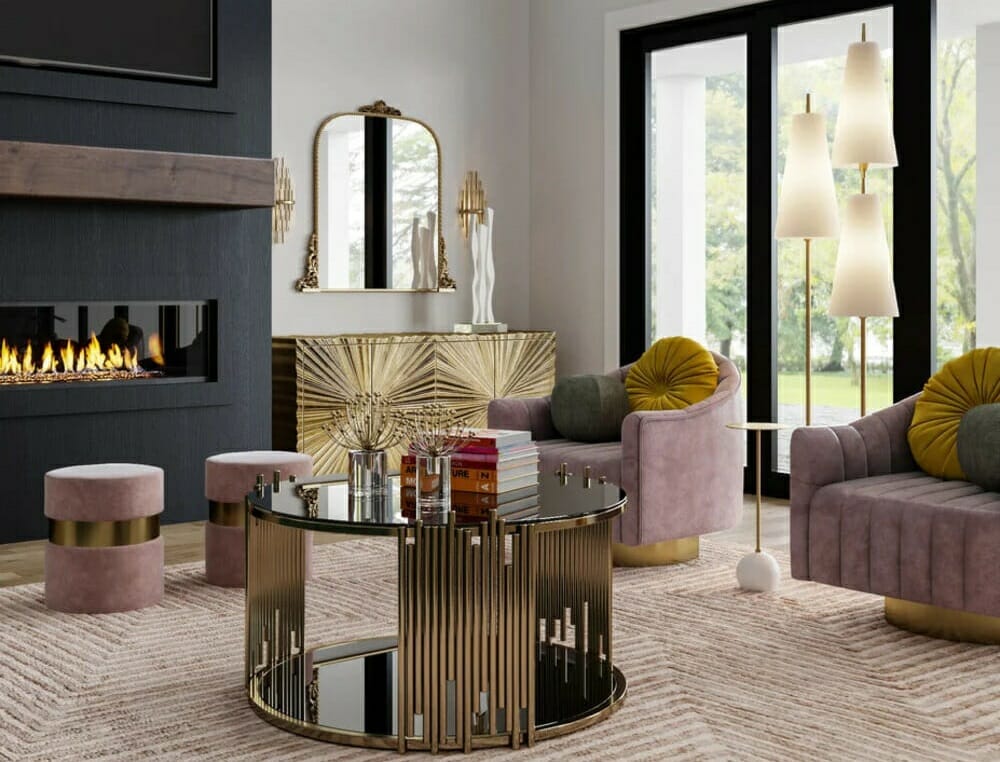
This iconic early twentieth-century design style originated in France and then made its way to the US from the 1910s to the 1940s. The industrial revolution heavily inspired art deco looks, and glossy metal was a popular material of choice during this time. Oversized furniture was also common, from armories to sofas. Today, our favorite place to go for art deco design inspiration has to be Florida. Miami Beach is a great place to see the art deco interior design style embraced.
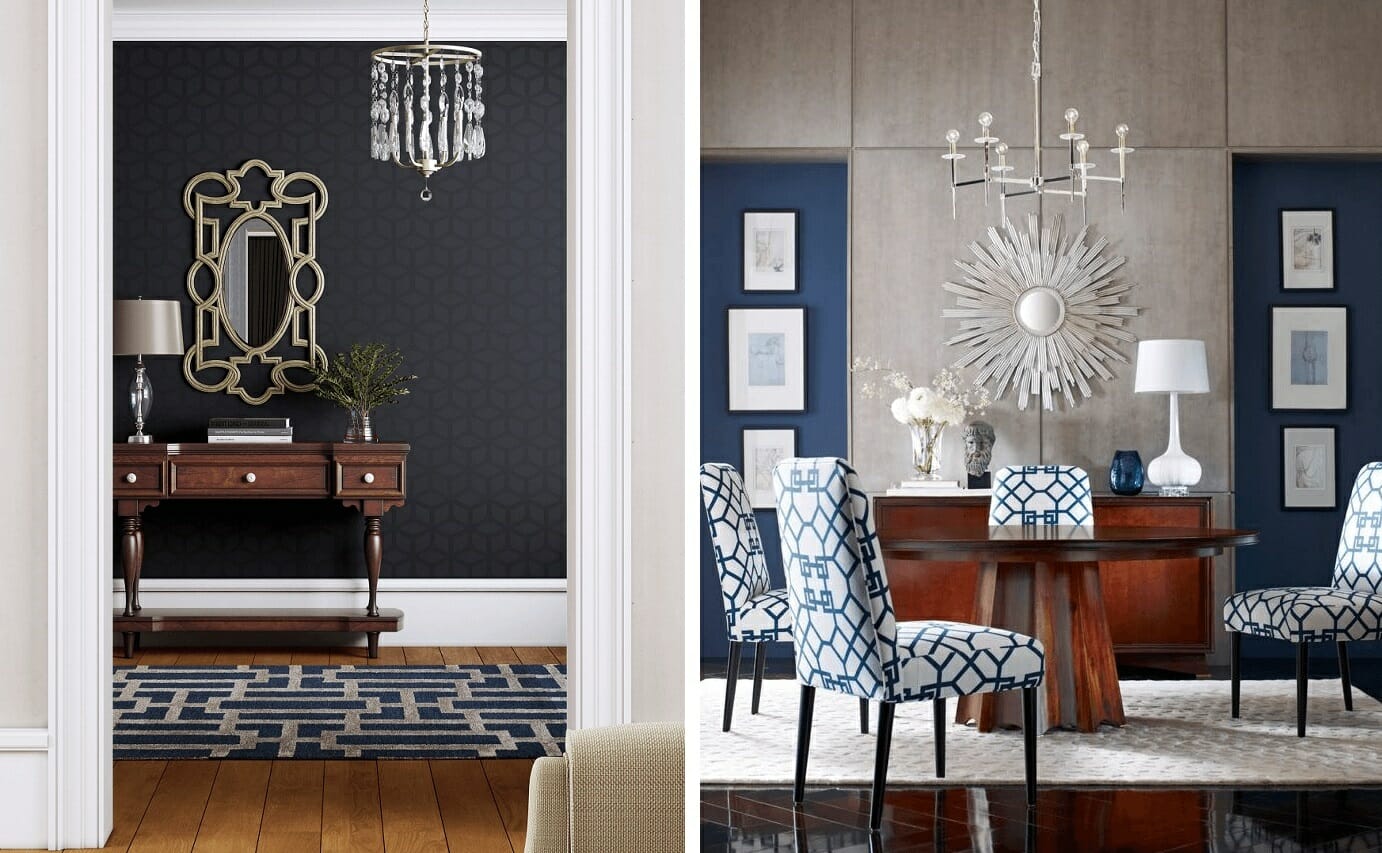
It’s easy to identify pieces from the art deco style by their typical sharp geometry, pointed edges and jagged corners. In addition to metal, glass was another prominent material used in Art Deco interiors. Mirrored surfaces and glass accents added a sense of elegance and reflected the era’s fascination with both modernity and technology.
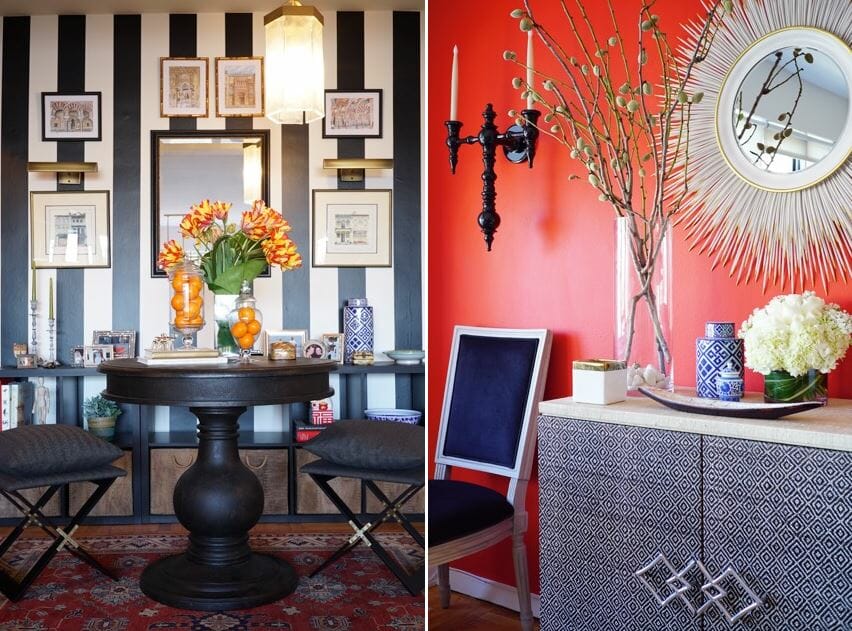
Another distinguishing feature of Art Deco interiors is the use of exotic or prominently luxurious elements. This style strongly embraced a sense of opulence. Silk, velvet, lacquered rare woods and animal hides/prints were commonly incorporated into furniture and decor.
Pro Tip: Gloss, polish, and precise edges define Art Deco Interior Design; there is no room for distress or casual aging.
Asian Zen Interior Design Style
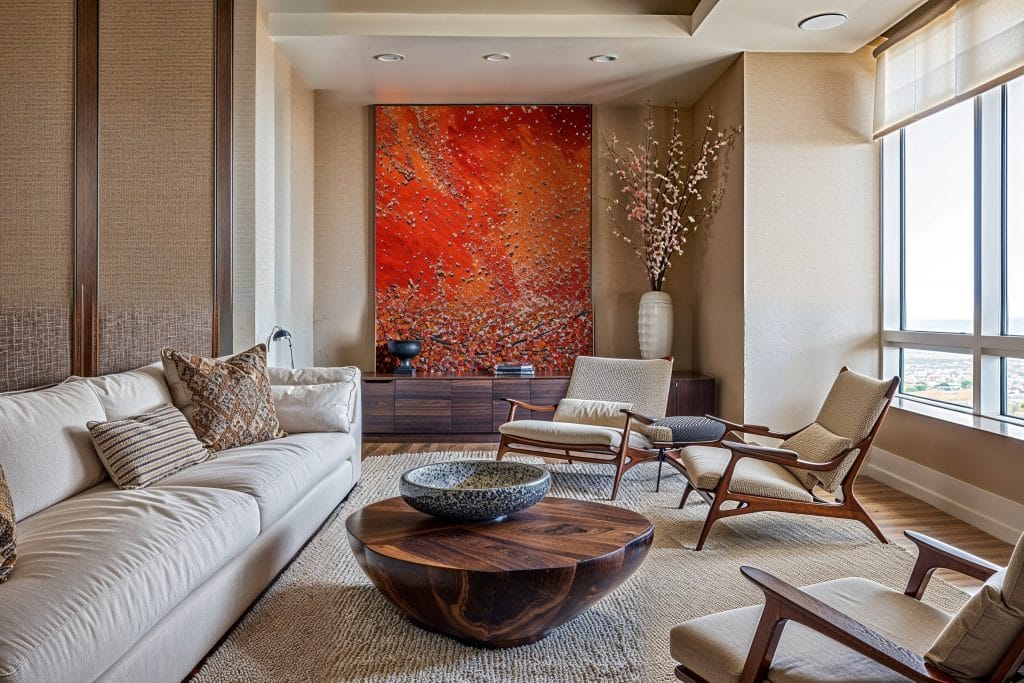
Ever heard of feng shui? You can bet you’ll find that philosophy utilized in many types of house décor styles, albeit not always obviously. Asian Zen interiors became an integral part of contemporary design. They focus on sleek lines and interesting shapes, but their most important asset is a notably relaxing atmosphere. References to nature are essential, and the goal is to create the ultimate zen space.
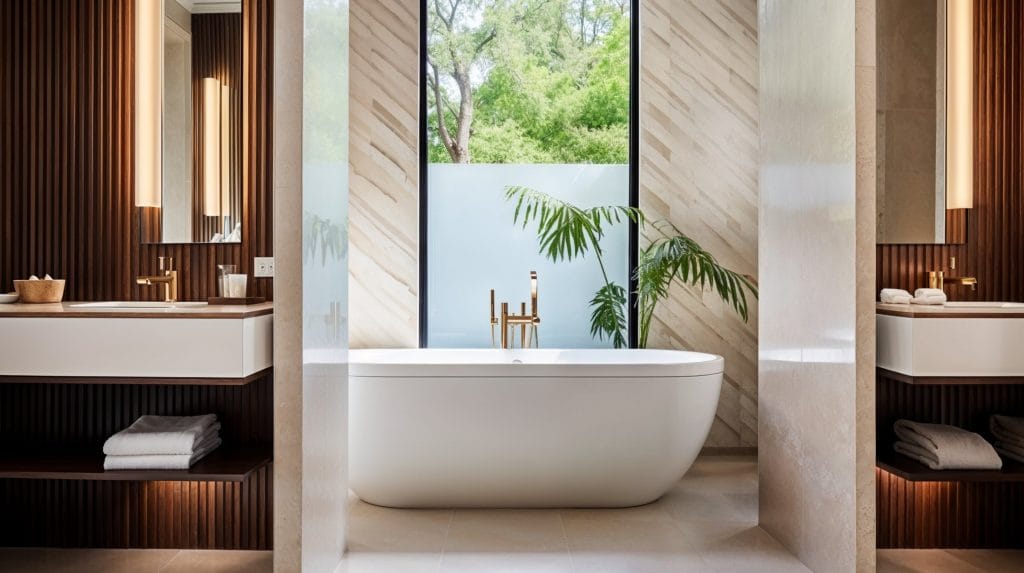
Asian interiors are often asymmetrical and prefer curves to squares. Curtain walls, shoji screens, or door panels are common for separating large open spaces and giving a sense of privacy. The color palette is drawn strictly from nature in order to keep the serene zen vibes.
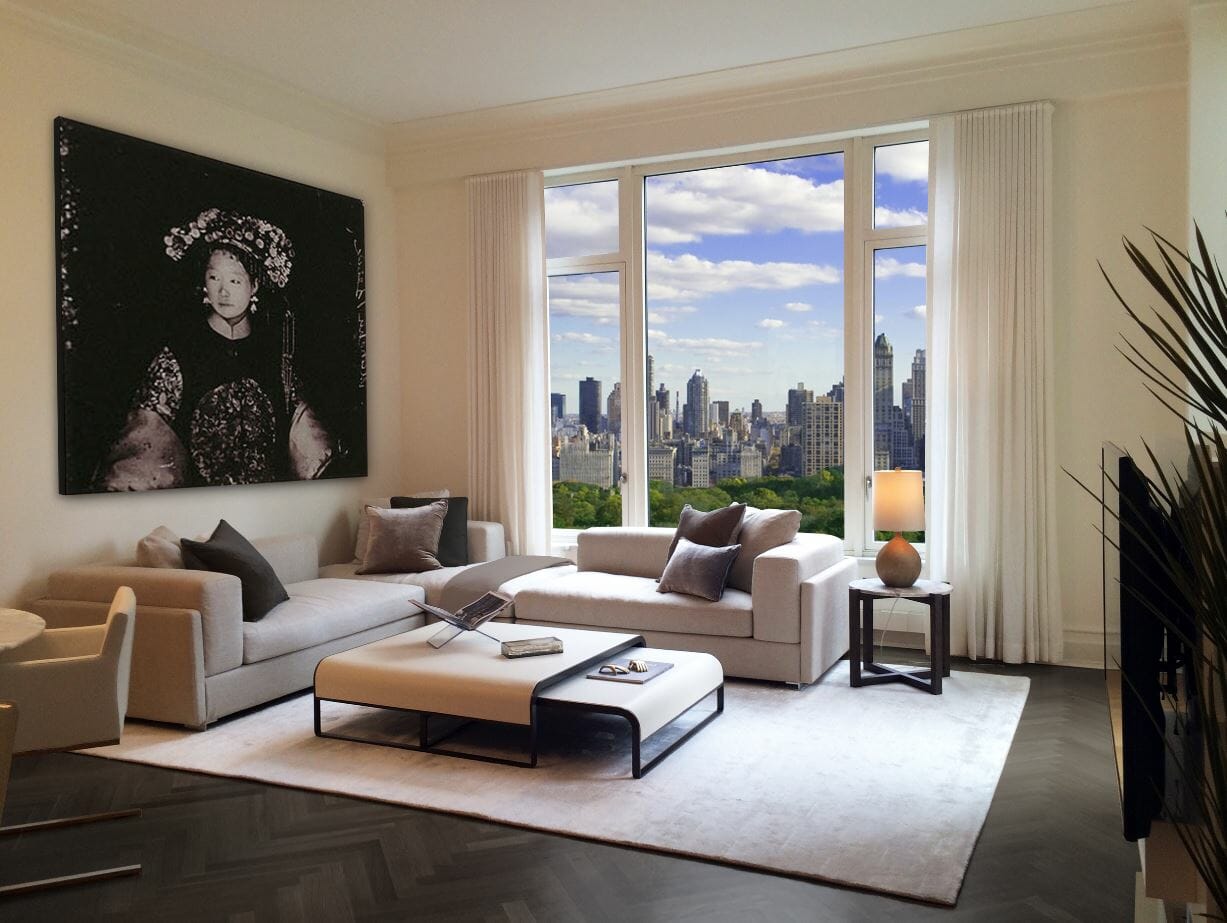
Asian Zen interiors use material weight sparingly. Floors stay clean and uninterrupted, while the furniture sits low, with strong horizontal movement. Bamboo, stone, and water are integrated deliberately to promote the vibe. Every object must justify its presence.
Pro Tip: In Feng Shui Interior Design, emptiness carries as much importance as any tangible element.
Top Interior Design Types Per Room
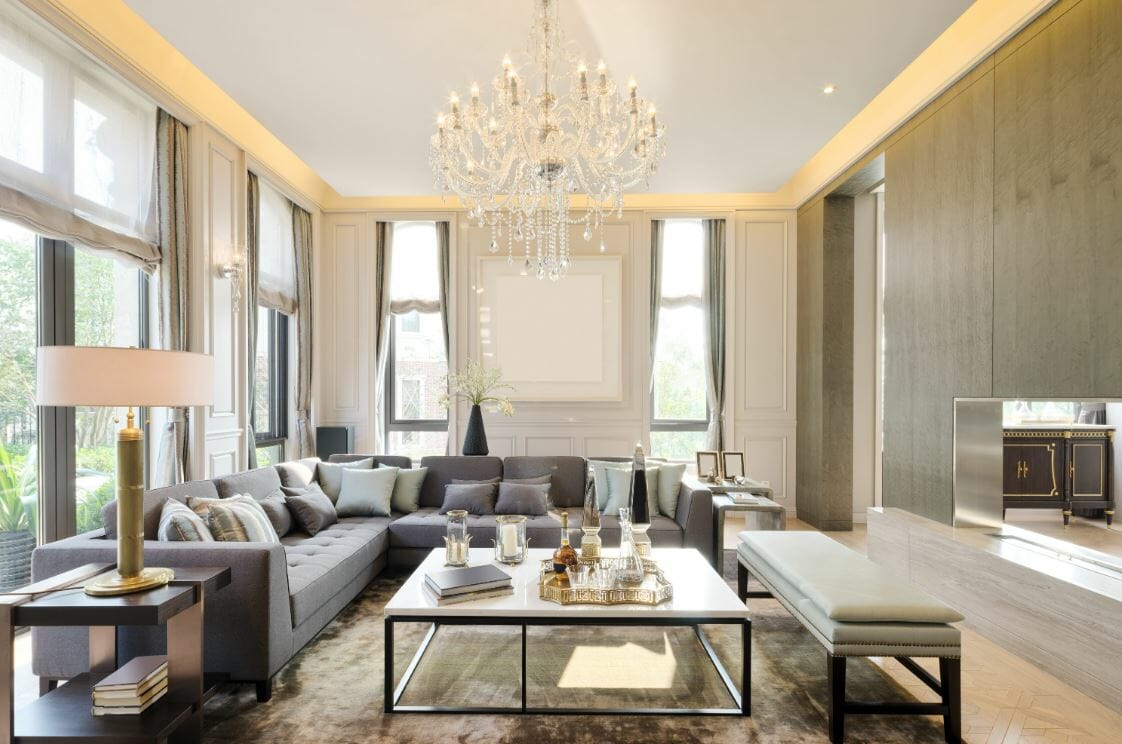
Choosing an interior design style that reflects your personality can overwhelming. That’s why we asked our Decorilla designers to narrow it down to their top 3 favorite picks for living room ideas and bedroom ideas.
Interior Design Styles: Living Room Top Picks

- Transitional Living Interior Design – If you’re looking for a sophisticated blend of old and new, then transitional interior design is a great pick for you. Check out this Transitional Living Room Before & After transformation for some serious inspiration.
- Modern Farmhouse Living Room Interior Design – Farmhouse interiors with a modern twist are a perfect choice, especially if you have an open concept great room. For even more Modern Farmhouse inspiration, see Decorilla’s top picks for interior designers with style like Joanna Gains.
- Eclectic Living Room Interior Design – this style is the ideal choice if you’re looking for a culturally rich living room with elements from different interior design types incorporated. Here’s how one Decorilla online interior designer transformed a new build home in this Eclectic Home Interior Design Before & After.
Interior Design Styles: Bedroom Top Picks

- Asian Zen Bedroom Interior Design – Create an oasis and connect to nature with this relaxing bedroom style. Find our essential checklist for your Bedroom design here to help you get started.
- Contemporary Bedroom Interior Design – Uncomplicated forms and clean lines are great to keep the bedroom simple yet sophisticated. This Contemporary Bedroom Before & After illustrates how a few key furniture pieces can change a space.
- Scandinavian Bedroom Interior Design Style – the Danish concept of hygge is what every bedroom needs to make it the ultimate cozy space. Find our designers’ best tips on how to Hygge Your Home Decor here.
Add Your Favorite Decorating Style to Your Home
This list of interior design styles defined for 2026 is nothing short of inspiring. Not sure how to get started with incorporating them in your own home? Then schedule a Free Interior Design Consultation and get help from a Decorilla design pro today!











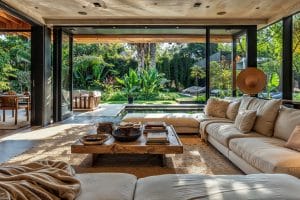
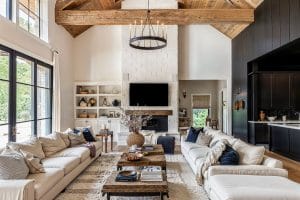
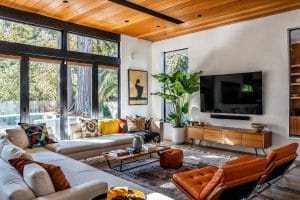
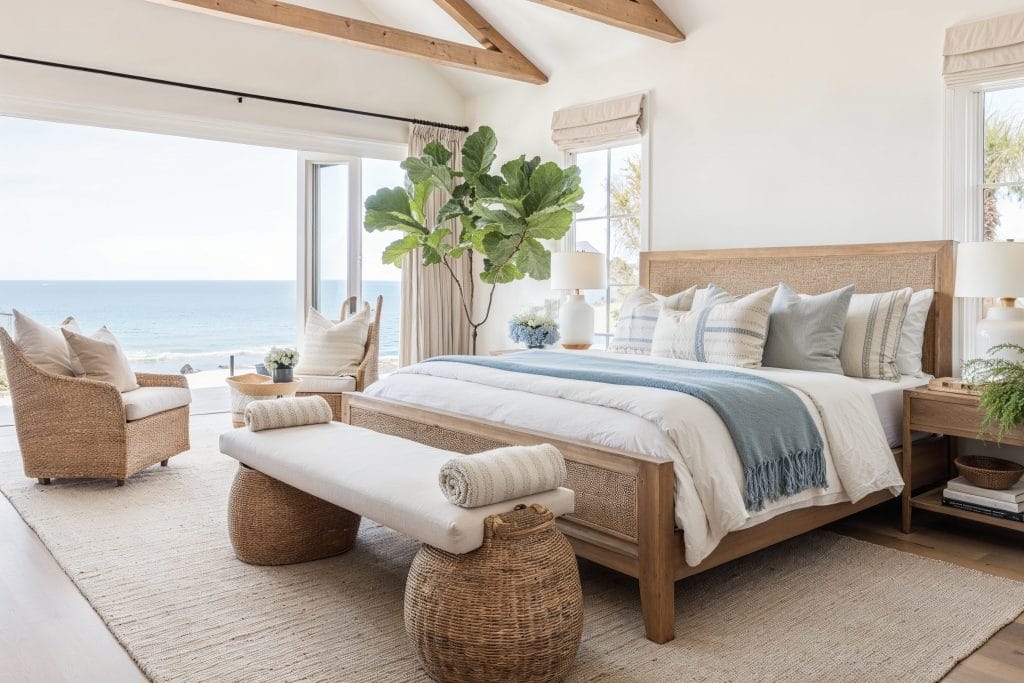
Comments
8 Comments
Most Voted
6 years ago
[…] They’re typically used in a farmhouse style interior, but a few touches here and there can fit other interior design styles as well, and will be just enough to transition your fireplace decor into […]
5 years ago
[…] decor or perhaps minimalist is your favorite, these 2019 Christmas décor trends can fit into any interior design style. Keep reading for 7 simple and festive ways to add a little holiday magic to your […]
5 years ago
[…] for a one-room revamp so that the result is not out of place. If you don’t know what your Interior Design Style is, collect images of homes that inspire you online or in magazines. This will assist your designer […]
5 years ago
[…] to peruse Instagram feeds, design shows, and coffee table books to agree. The free-spirit animal of Interior Design Styles, bohemian design unleashes color, texture, and pattern in a way that offers a relaxed and unique […]
5 years ago
[…] of light enables designers to create an atmosphere that they couldn’t before. Regardless of Interior Design Style, task and accent lighting is woven into the kitchen’s […]
5 years ago
[…] to Decorilla – Think smooth, clean lines with chrome, metal, and glass playing a role. Not a lot of […]
5 years ago
[…] it’s vital to get it right. Here is our quick guide on the most popular house floor plans and the interior design styles that make them sing. Once you know these basics, you’ll be one step closer to making your dream […]
5 years ago
[…] peruse Instagram feeds, design shows, and coffee table books to agree. The free-spirit animal of Interior Design Styles, bohemian design unleashes color, texture, and pattern in a way that offers a relaxed and unique […]
[…] They’re typically used in a farmhouse style interior, but a few touches here and there can fit other interior design styles as well, and will be just enough to transition your fireplace decor into […]
[…] decor or perhaps minimalist is your favorite, these 2019 Christmas décor trends can fit into any interior design style. Keep reading for 7 simple and festive ways to add a little holiday magic to your […]
[…] for a one-room revamp so that the result is not out of place. If you don’t know what your Interior Design Style is, collect images of homes that inspire you online or in magazines. This will assist your designer […]
[…] to peruse Instagram feeds, design shows, and coffee table books to agree. The free-spirit animal of Interior Design Styles, bohemian design unleashes color, texture, and pattern in a way that offers a relaxed and unique […]
[…] of light enables designers to create an atmosphere that they couldn’t before. Regardless of Interior Design Style, task and accent lighting is woven into the kitchen’s […]
[…] to Decorilla – Think smooth, clean lines with chrome, metal, and glass playing a role. Not a lot of […]
[…] it’s vital to get it right. Here is our quick guide on the most popular house floor plans and the interior design styles that make them sing. Once you know these basics, you’ll be one step closer to making your dream […]
[…] peruse Instagram feeds, design shows, and coffee table books to agree. The free-spirit animal of Interior Design Styles, bohemian design unleashes color, texture, and pattern in a way that offers a relaxed and unique […]